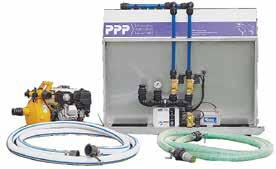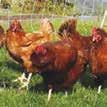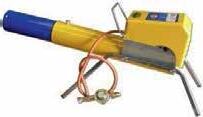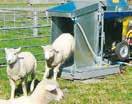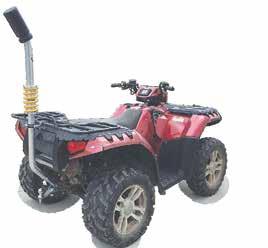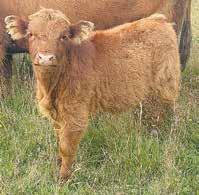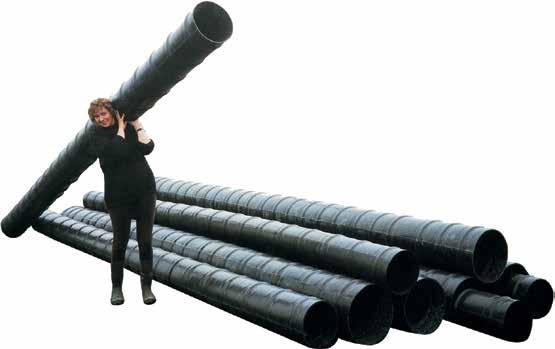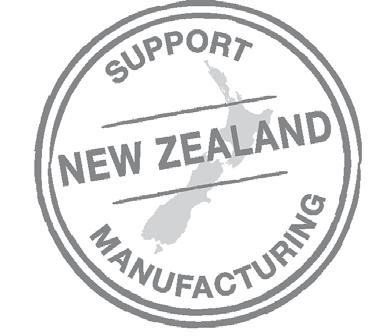






THIS YEAR won’t be an easy one for the red meat sector, says Meat Industry Association chief executive Sirma Karapeeva.
Speaking to Rural News at the National Lamb Day celebrations at Parliament, she said there are big domestic and international challenges on the horizon as well as a lot of geopolitical issues NZ cannot control.
“But we are watching them very closely and I think the foundation that we have in the industry put us in a good position to be able to pivot and mitigate the risks if they come,” she says.
Karapeeva says the new Trump administration is unpredictable so there is potential for disruption. She says for now they are just watching for any change that directly impacts the sector.
Trump’s trade policies come at a time when the US operates a large negative trade balance with the rest of the world. This happens when a country buys or imports more from other countries than it sells or exports to them.
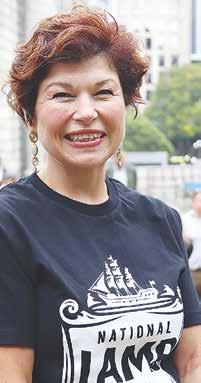
Agriculture Minister Todd McClay points out that NZ’s trade with the US is well balanced and complementary.
“We more or less buy similar amounts from each other. Actually, NZ exporters face higher tariffs into the US than their exporters do to us,” he told Rural News. “So there is very
good story to tell the new administration about the fact that we are good partners, we get on well, we trade very well with each other, we respect the rules and there are ways to grow trade between the two countries,” he says.
McClay says it’s good that NZ doesn’t have a huge trade imbalance with the USA and this should be to our advantage. He says that in the coming year, he and other NZ politicians will be visiting the US to talk to their counterparts and officials and also to meet them on the sidelines of other world events.
In the meantime, Karapeeva says the sector intends to keep a low profile and let things ride.
There has been talk of a slow start to the meat processing sector – especially in the South Island – and Karapeeva says while there may be some over capacity in some areas, it’s important this is retained to manage the ebbs and flows of the season. She says the season is just kicking off but it’s unlikely there will be any increase in stock numbers anytime soon.
“We will do the best to process in a timely manner and get the product into the export markets as required,” she says.

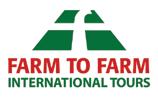
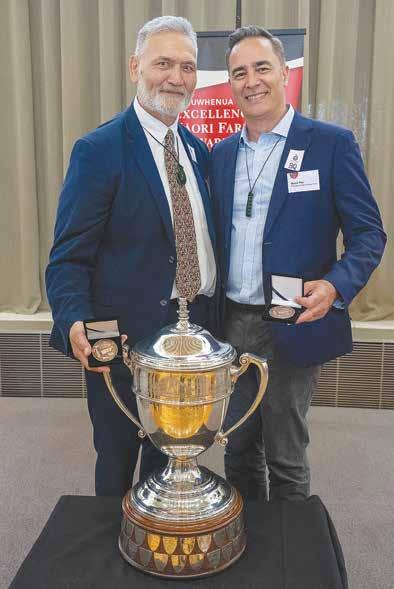
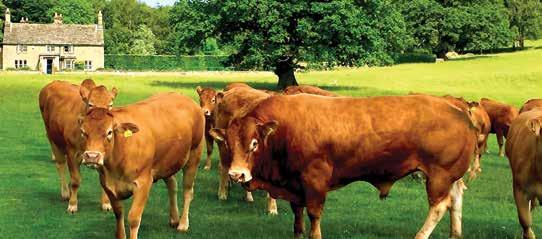

One NZ Satellite TXT is here.
Living the rural dream? There’s a new way to help you keep in touch while living and working in rural New Zealand.
Whether you’ve got a fence down, livestock on the loose, or a flat tyre on the 4x4, you can use One NZ Satellite TXT to stay in contact while living or working in areas traditional cell towers don’t reach (around 40% of our land mass).*
Our nationwide satellite TXT service is the first of its kind in the world and promises to be a game-changer, helping Kiwi be safer, better connected and more productive.
To TXT in the middle of nowhere, you’ll need an eligible One NZ mobile plan and phone. Messages can take a few minutes to send and receive^ (they’ve got a long way to travel, to space and back!), but it’s worth it knowing you’ve got an additional layer of communication alongside existing safety devices you carry. Best of all, it won’t cost you extra to use it if you’re on an eligible One NZ plan.
One NZ Satellite TXT – helping you work smarter not harder on the farm, even if you’re down in the back paddock!
Visit one.nz/SpaceX for more info.


SUDESH KISSUN sudeshk@ruralnews.co.nz
BUOYED BY a survey showing farmer confidence rising to its highest level in over a decade, Federated Farmers says it’s not taking its foot off the pedal.
The farmer lobby says its biggest role is keeping the Government honest.
The Federated Farmers January survey shows farmers’ confidence in current general economic conditions has surged from a deeply negative 66% in July 2024 to a net positive score of 2%. This marks the largest one-off improvement since the question was introduced in 2016.
The survey shows falling interest rates, rising incomes and more favourable farming rules have all played a major role in that improvement.
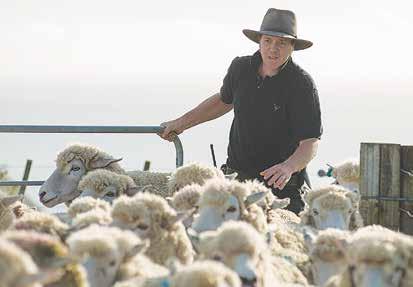
low base. Yes, farmer confidence is now in positive territory, but there’s still a lot of room for improvement.”
HEAD OFFICE
Lower Ground Floor, 29 Northcroft Street, Takapuna, Auckland 0622
Phone: 09-307 0399
Fax: 09-307 0122
POSTAL ADDRESS
PO Box 331100, Takapuna, Auckland 0740
Published by: Rural News Group
Printed by: Inkwise NZ Ltd
CONTACTS
Editorial: editor@ruralnews.co.nz
Advertising material: davef@ruralnews.co.nz
Rural News online: www.ruralnews.co.nz
Subscriptions: subsrndn@ruralnews.co.nz
Federated Farmers meat and wool chair Toby Williams told Rural News that to see farmer confidence bounce back from record lows to its highest point in over a decade is a phenomenal result.
“It was the largest one-off lift in farmer confidence we’ve seen to date, and I think it’s important that we celebrate that. We were coming off a pretty
Williams believes the key thing is holding the Government to account.
“During the election, a lot of promises were made to our farmers and rural communities, and we need to make sure they deliver on those –because people are depending on it.
“There’s no denying the Government have done a lot for farmers so far, and that’s certainly appreciated,
but there’s still a lot more that needs to be done.
“I think we’ve shown that we can work with the Government to get stuff done, but when they make a stuff up, we’re not afraid to call them out for that and apply a bit of pressure.
“That’s exactly what we’ve seen over the last few weeks with the announcement of these new international emission reduction targets that are just going to lead to more pine trees in rural communities.”
Williams says they are going to have a lot more to say about the Government’s climate policies in the coming weeks and months
“So, watch this space. New Zealand needs sensible and achievable climate policy, not a hope and pray approach that will just see hundreds of thousands of hectares planted in pine trees.
“This is a huge issue for our meat and wool members in particular.”
Federated Farmers president Wayne Langford says they will keep pushing hard to cut costs out of farmers’ businesses and reduce some of that regulatory burden.
The survey results show regulation and compliance costs remain the greatest concerns for farmers, followed by interest rates and banks, and input costs.
“When it comes to farmer confidence, a lot of it comes down to what’s coming into our bank account, and what’s going out the other side. It’s a simple equation,” Langford says.
“A lot of that is market driven, and farmers are used to riding those highs and lows, but government rules and regulations have a significant impact on farmers’ costs.”
AN OUTRIGHT sale of Fonterra’s global consumer business is more likely than a float, says Forsyth Barr senior analyst equities, Matt Montgomerie.
He says this would allow a possible buyer to realise material synergies – like distribution & marketing – through greater scale by adding the Fonterra brands to an already wide consumer brand portfolio.
“We aren’t particularly surprised at Fonterra looking to float the consumer business – it has been well flagged in previous communication,” Montgomerie told Rural News.
“This doesn’t necessarily mean we view it as the most likely outcome
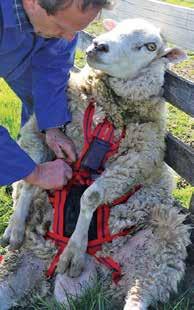
though. We think an outright sale is more likely.”
Fonterra has announced that it will be engaging with potential buyers for its global consumer business and integrated business units, Fonterra Oceania and Sri Lanka.
At the same time, the co-operative is preparing for a possible initial public offering (IPO), saying its intention is to thoroughly test the terms and value of both a trade sale and IPO before selecting an option to put to farmer shareholders for a vote.
Fonterra has chosen Mainland Group as the corporate brand for the group if it is to proceed with an IPO.


Fonterra Co-operative Council chair John Stevenson told Rural News that Fonterra farmers will be pleased to see an update on the progress of the divestment process.
“We look forward to seeing the outcome of this next stage where the value and terms of both the potential IPO and trade sale are thoroughly tested.
“It is important to note that farmer shareholders will have to consider and vote on any final outcome.”
Fonterra hopes for “a significant capital return” to farmer shareholders and unit holders following the divestment.
Fonterra farmers are forecast to

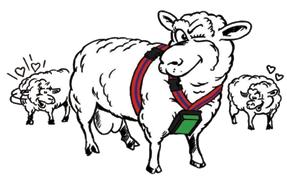
receive a record milk price – currently $10.25/kgMS – for this season. A high milk price means increased cost of production for the consumer business.
But Montgomerie says they don’t think the current high milk price will deter buyers.
“It is unfortunate timing for Fonterra trying to sell the Consumer business with high milk prices, given the squeeze this places on margins, however, earnings within a single period shouldn’t detract materially from the underlying business value, particularly given capital employed in the ‘in-scope’ businesses is $3.4 billion.” – Sudesh Kissun

FARMS FROM Northland and northern Hawke’s Bay are the finalists in this year’s Ahuwhenua Trophy competition for the top Māori sheep and beef farms.
The two finalists are Whangaroa Ngaiotonga Trust from Northland and Tawapata South Māori Incorporation Onenui Station from Hawke’s Bay.
The finalists were announced by the Minister of Agriculture, Todd McClay, at a function in parliaments Beehive last week. The event was attended by more than 100 people including politicians, diplomats, Māori and primary industry leaders, the finalists and their whanau.
The Ahuwhenua Trophy is an annual award for Māori agri-
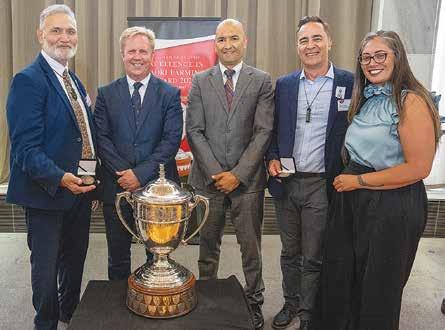
culture and was inaugurated in 1933 by the Māori leader, Sir Apirana Ngata and the Governor General at the time, Lord Bledisloe. The objective was and still is to encourage Māori farmers to improve their land and their overall farming performance, with an emphasis on sus-
tainability.
On a three-year rotational basis, the trophy is competed for by Māori farmers and growers in the sheep and beef, dairy and horticultural sectors. This year the competition is for sheep and beef.
Whangaroa Ngaiotonga Trusts prop-
erty is situated near the east coast settlement of Whangaruru, about an hour’s drive north of Whangārei. About an hour’s drive further north is the popular tourist town of Paihia. The actual farms takes up about a third of the 1,100ha of land owned by the trust
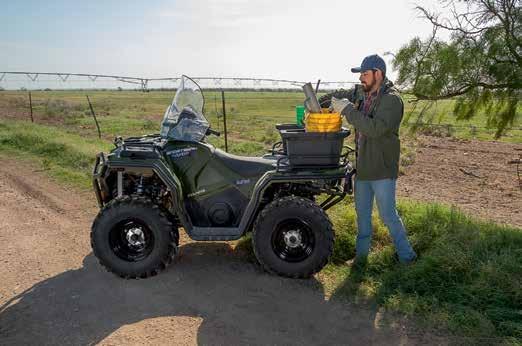

and on it they finish about 1,000 bulls. There is also 297ha of forestry and 433ha of native forest and wetland.
Tawapata South Māori Incorporation Onenui Station is a Māori incorporation located at the tip of the Māhia Peninsula, Hawke’s Bay. Of the 3,476ha of whenua 1,700ha is effective farmland and 836ha under a Ngā Whenua Rāhui Kawenata.
Onenui Station is a sheep and beef farming unit wintering 15,000 stock units, including 6,000 breeding ewes, 600 breeding cows, replacements, and trade cattle. The farm finishes 75% of its sheep and 36% of its cattle, with the remainder sold store. The station comprises 350 hectares of productive flats, with the balance classified as North Island steep hard hill country.
NUKUHIA HADFIELD, chair of the Ahuwhenua Trophy management committee, says it is fantastic to see these excellent finalists who will add to the impressive alumni created by this award.
She says the last few years have been hard for all sheep and beef farmers around the country as they have fought to stay in business against the odds of adverse weather and lower prices, especially for sheep meat.
“Māori farmers have been among the worst affected by the adverse weather, given that many are in areas such as the East Coast of the North Island which bore the brunt of cyclone Gabrielle and other heavy rainstorms. I live in this region and know first-hand what our communities have endured,” she says.
Hadfield says Māori are intergenerational farmers, meaning that while they want to get their properties up and running as quickly as others, they are equally concerned that any such repairs will be of such good quality as to protect the land for future generations.
“A philosophy that is both practical and sensible, and one that is catching on in the wider agri-sector,” she says.
Hadfield says the other encouraging news for Māori was contained in a recent MPI report which shows that the asset base of Māori collectives (trusts, incorporations and other entities but not individual farmers) has risen from $6 billion in 2013 to $19 billion in 2023. She says this data shows conclusively that Māori are a real force in the NZ economy.
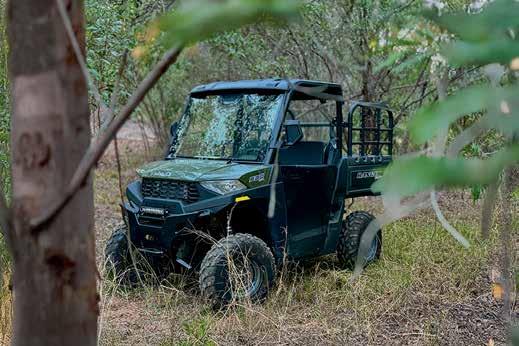


PRIMARY SECTOR
groups appear to be generally supportive of the Gene Technology Bill currently before parliamentarians.
The bill will end New Zealand’s near 30-year ban on gene technology outside the lab and is a major milestone in modernising our laws to unlock the potential of science. Gene technology is seen as being able to deliver enormous benefits including access to better cancer treatments, and increased productivity for farmers through such things as disease-resistant and drought-resistant grasses and tools to help meet emissions targets
The legislation is now
before the Health Select Committee which called from submissions on the bill. Submissions closed on February 17 and these will be considered by the select committee in the coming months.
In its submission, AgResearch says it supports the bill but is proposing some changes to tighten and clarify the wording in it.
It says it provides the opportunity to align NZ’s activities and regulations with those of our major trading partners such as the US, Australia, China, and potentially the EU. It says as a user of gene technology in research, its work has been impacted by the current regulatory regime through the HSNO Act, and it believes the new legislation will
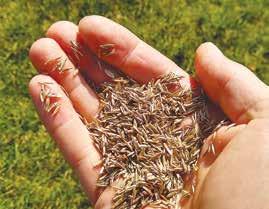
BEEF+LAMB NZ says while it is supportive of a review of NZ’s gene technology legislation, it believes it’s important to take the time to address a number of critical issues.
B+LNZ chair Kate Acland says there have been significant scientific developments internationally in the last couple of decades and a review of our regulatory settings is appropriate.
Acland says, in the face of future production challenges, farmers will need ongoing scientific development and access to the same science and tools as their international counterparts, and that may include new genetic technologies.
“There are potential opportunities to improve our farmers’ productivity and environmental impacts. However, there are also a number of potential risks that still need to be addressed in the proposed legislation. These include potential market or trade implications, traceability and co-existence, and how risks are classified,” she says.
Acland adds that B+LNZ’s select committee submission was informed by a survey of its farmers last year, but believes that further farmer engagement is needed.
She says the survey showed there’s a wide range of farmer views on this topic with many seeing potential benefits, a number very concerned, and the majority of farmers feel they need more information.
“We need to ensure we take our time on this important issue and bring our farmers along with us,” she says.
enhance research with potential for improved human health, export revenue, reduced environmental impact, and so on.
The five-page sub-
mission by AgResearch makes several recommendations for the Health Committee to consider.
These include asking that, prior to the expected date
of its final reading, government should resource work to achieve alignment across the various production, processing, and exporting systems
Successful forage brassica and pasture production is highly dependent on the first six weeks of a plant’s life. Ultrastrike® and Superstrike® seed treatments include insecticides, fungicides and nutrients to maximise seedling establishment, helping to deliver higher yields and improved animal production.
within agriculture, horticulture, forestry, and so on.
It also wants clarification of the terms used in the bill, warning that
unless these are concise, it could pose problems in the future. Another key issue for AgResearch relates to approvals for conducting field tests.
jessica@ruralnews.co.nz
BIOSECURITY NEW Zealand Commissioner, North, Mike Inglis says the $2.4 million cost of a recent biosecurity operation in South Auckland is small compared to the potential economic impact of an incursion.
Early last month, an Oriental fruit fly was discovered in the Mangere/ Papatoetoe area, kicking off a Controlled Area Notice and increased trapping in the area.
This month, controls in the area were lifted after no further fruit flies were found in the area, and Inglis says Biosecurity New Zealand is “extremely
pleased” with the outcome of its efforts. “Responding to threats from unwanted pests and diseases is something our people and our industry partners are pretty experienced in,” Inglis told Rural News
Previously, New Zealand has experienced and eradicated 12 fruit fly incursions and Inglis says that means Biosecurity New Zealand had strong and detailed operational plans to guide the work.
“When this fruit fly was detected, our team moved quickly to bolster the number of traps and checks, put in legal controls to help prevent the movement of fruit and vegetables, deliver bins for waste disposal, and
set up a mobile lab to inspect fruit and vegetables from the area for any eggs or larvae.”
Inglis says there was “fantastic” support both from those in the community and sector groups.
“Residents worked with the movement restrictions and regular checking of traps in their gardens and we are extremely grateful for their support,” he says.
“This response has been vital to our success in keeping fruit fly out of New Zealand. It could not have happened without backing from the community and the horticultural sector,” he adds.
“The actions taken in partnership with the sector were to protect our
$7 billion horticulture industry and the estimated cost of around $2.4 million to respond to this pest is small in comparison with the economic impact to New Zealand of it becoming established here.”
Biosecurity Minister Andrew Hoggard says the initial discovery of the fruit fly highlights the importance of New Zealand having a strong biosecurity system.
“I would especially like to thank Biosecurity New Zealand staff for their work to rapidly stand up a response while most of us were enjoying a Christmas holiday,” Hoggard says.
“Incursions of pests and diseases don’t take a break and that’s why our
biosecurity system doesn’t either.
“The dedication of skilled staff is vital to protect New Zealand’s valuable agricultural and horticultural exports.”
Meanwhile, Horticulture New Zealand chief executive Kate Scott says growers will be pleased by the outcome of the biosecurity operation.
“Biosecurity is critical to their livelihoods, and growers rely on a strong, responsive system to protect their crops, orchards and market access,” she says. “While the movement restrictions have been lifted, we support the ongoing surveillance as part of routine biosecurity measures. Continued vigilance is essential to keeping our sector free of pests like Oriental fruit fly.”
AGRESEARCH SCIEN-
TISTS have collected the first known data showing behavioural developmental impacts on lambs whose mothers were treated with long-acting drugs for parasites.
Against a backdrop of increasing resistance among livestock internal parasites to commonly used drenches in New Zealand, the scientists set out to look at what effects of anthelmintic use may be passed on from the treated ewe to her lambs.
Treatment of pregnant ewes with persistent macrocyclic lactone anthelmintic products is common in some countries, including New Zealand, with the intent of reducing negative impacts of parasites on production, health and welfare.
“What we found was evidence in some cases of delayed neonatal lamb behaviour associated with anthelmintic use in the mother, which is the first time we know of this being recorded,” says AgResearch scientist Melissa Hempstead.
“Now we need to do further research to build on these initial observations, and to help understand what the implications are for the survival and performance of these lambs from the neonatal stage.”
In an experiment set up by Hempstead and her colleagues, sixty mixed-age pregnant twin-bearing ewes were split equally into three groups with different treatments: moxidectin 2-3 weeks prior to lambing, abamectin and albendazole 2–3 weeks
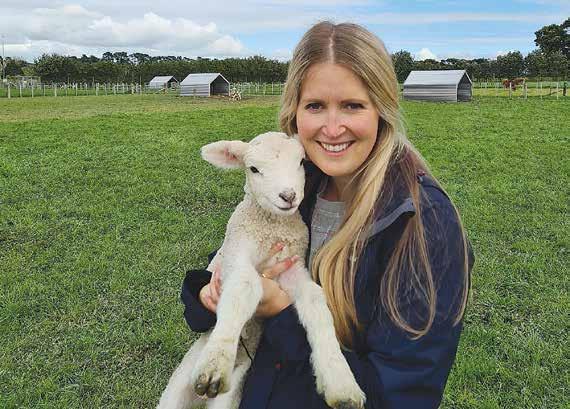
prior to lambing, or a control group with no drug administered.
The ewes were housed indoors four
weeks before they were expected to give birth, and behaviour of both ewes and lambs was monitored using video
cameras. Ewe and lamb behaviour was evaluated for three hours after the birth.
“There was no evi-
dence that abamectin and albendazole affected ewe or lamb behaviour,” Hempstead says.
“However, we found
that neonatal lambs from ewes administered moxidectin tended to be slower to shake their heads after birth and were slower to attempt to stand compared with lambs from the untreated ewes.”
This latest research builds on efforts by AgResearch’s Parasitology Team to support farmers and industries grappling with the challenge of managing internal parasites in livestock, and how best to address it.
Rising resistance to drug treatments means that other management practices need to be considered and investigated by researchers. Read more about the lamb behaviour research at: https://www.sciencedirect. com/science/article/pii/ S0168159125000528

“Basically,
are financially mortally wounded by the effects of Cyclone Gabrielle and may have to sell up because of their high debt levels.
That’s the view of Paul Paynter, general manager of the Yummy Fruit Company, a family-owned company in Hawke’s Bay that’s been in the orcharding business for 162 years. But he says the days of the family business continuing as it has done for all those years could be numbered.
Cyclone Gabrielle destroyed 180,000 of their apple trees and
while they have replanted 100,000 this past year and plan to plant more this year, the cost of lost production and rising debt is proving to be a hurdle too high.
“It’s easy for people to see the damaged trees, but what they don’t see is the balance sheet destruction that we are facing,” Paynter told Rural News.
“Basically, ten to fif-
teen percent of our assets (trees) are gone forever and because of the loss of crop, our debt has risen by around ten percent,” he says
Paynter says they are one of the lucky orchardists to get a loan from the government agency Kanoa – interest free for five years, which is just about long enough for them to get some form of commercial return on
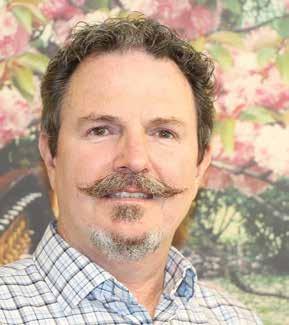
the new plantings. But he says after that they will have to pay interest, and it will take a full ten years
before the investment of the plantings breaks even.
He says with this situation, nobody is very
popular with the conventional banking model and to that end they are at the mercy of their bank.
“The only solution is what we call ‘balance sheet restructuring’ which is a euphemism for selling up or bringing in a large equity shareholder. We simply cannot survive because we have too much debt,” he says
Paynter says there appears to be a lack of confidence worldwide in interest rates falling and inflation being got under control. He says the only solution is getting in new capital – not an easy road either – and he points to the fact that no investor wants to invest in a ‘disaster’.
To that end Paynter says they are replanting the apples trees and getting the business back to a position where an investor can see potential. He says other large orchardists are in the same position and some have already sold substantial assets to improve their financial position.
“The sad thing is that in a couple of years we could be 50% Chinese owned. But I would expect the most likely outcome is that someone will come along and buy us and my family history of 162 years in the orcharding business will come to an end –all because of Cyclone Gabrielle,” he says.
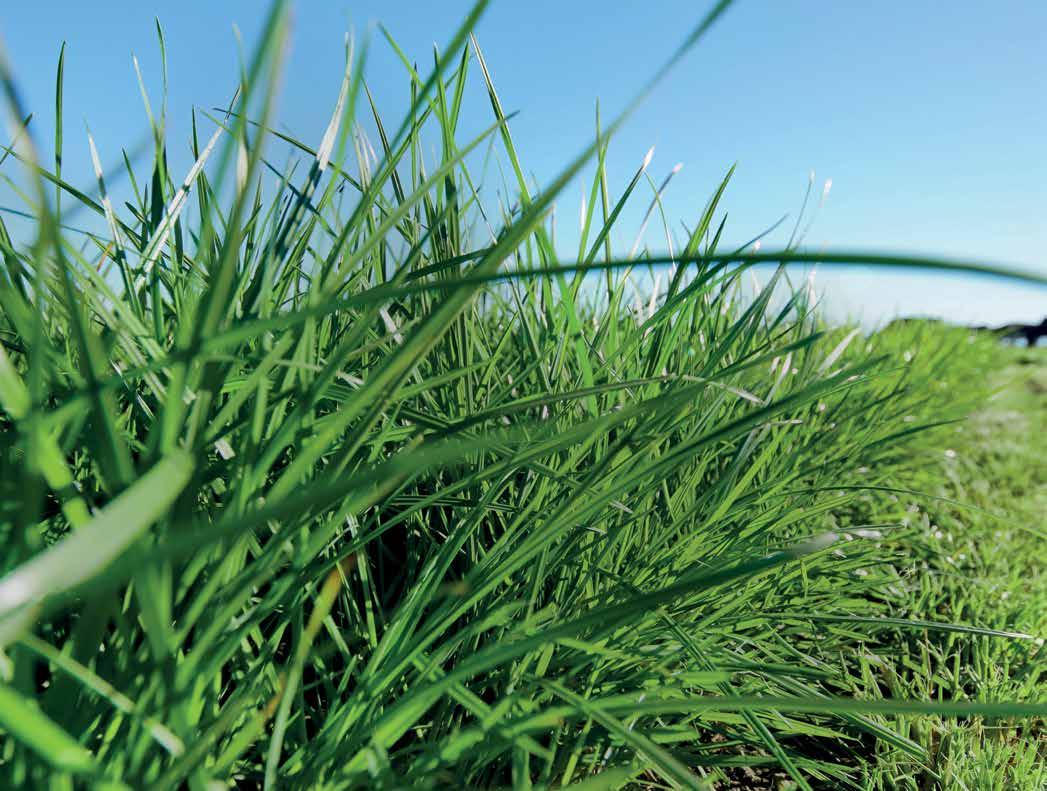
ONE OF the most important events in the history of the primary sector that happened 143 years ago was celebrated in style at Parliament recently.
It was February the 14th, 1882 that the first shipment of 5,000 frozen sheep and lamb carcasses left Port Chalmers on the ship Dunedin for the three-month voyage to the UK, setting up the huge export trade that we have today.
To mark the anniversary, a special BBQ lunch took place on the Speaker’s Lawn behind Parliament buildings. More than 100 guests including politicians, farmers and primary and public sector representatives attended and of course there was only one dish – lamb.
This is the second year this event has been staged and was part of an overall series of events held throughout the country to commemorate this historic occasion.
Minister of Agriculture
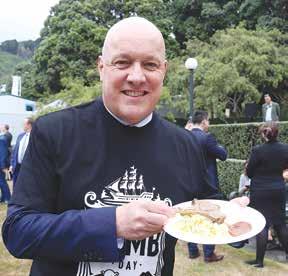
Todd McClay described the event as honouring the legacy of early sector pioneers and acknowledging the hard work and resilience of NZ farmers, processors, and exporters. He says their dedication ensures that NZ’s red meat sector remains world leading and ready to grow.
“The sector isn’t just crucial to our goal of doubling exports by value in ten years – it also supports 76,000 jobs across New Zealand and is leading the way in sustainable farming,” he says.
McClay believes the
outlook for lamb is very positive compared with last year when the same event was held at Parliament. He says prices are up and there is more optimism. McClay says the Government has been working hard to get costs down for farmers, to simplify the rules and regulations, and get the regional council off their backs.
Speaking to Rural News at the event, Beef+Lamb NZ chief executive Alan Thomson says as well as celebrating that first shipment of lamb, the event at Parlia-
ment is about recognising the hard few years that sheep farmers have been through. He says it’s also about celebrating that eight out of every ten export dollars come from the primary sector.
“This is a celebration of the sector as a whole but specifically calling out our lamb producers, who in my mind, produce the best lamb in the world,” he says
Thomson says lamb is an amazing dish, but it must be cooked properly. He says it’s a premium product which is popular in high end restaurants in Europe and the US.
He says lamb is a product enjoyed the world over and the goal is greater penetration in some key markets.
The sheep sector, says Thomson, has done some amazing things over the years, especially in the area of genetics with an annual compounding gain of 2% which has increased productivity. He says another genetic gain has been producing traits in sheep to produce
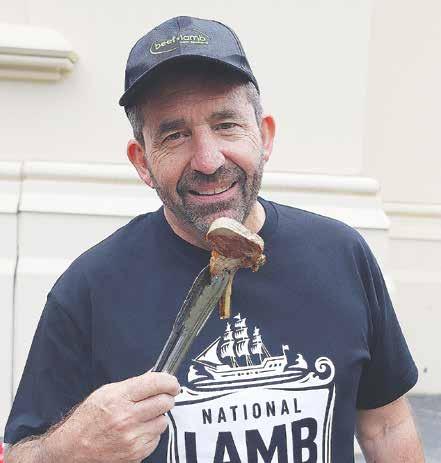
less methane.
“Finally, today we should not forget the contribution that the meat sector makes to the NZ economy. Every day 90,000 people go to work in the wider meat industry, making it the largest export manufacturing
NEW ZEALAND’S red meat exports for 2024 finished on a positive note, with total export value increasing 17% over last December to reach $1.04 billion, according to the Meat Industry Association (MIA).
This is only the second month in 2024 where exports exceeded $1 billion.
MIA chief executive Sirma Karapeeva says this reflects a continued recovery in global demand and the resilience of New Zealand’s red meat sector. She says China remained the
largest market for the month, with exports steady at $313 million year on year, while other major markets showed significant growth.
“Exports to the US surged 38% to $310 million, while the UK saw a 53% increase to $64 million, and Canada experienced growth of 116% to $46 million,” she says.
Karapeeva says despite a 3% decline in sheepmeat export volume to 37,215 tonnes, the value rose 22% to $378 million, driven by strong demand in key markets.
She says exports to China fell 7% by volume to 20,364 tonnes, yet their value increased by 21% to $135 million. At the same time beef exports saw a slight decline in volume, down 1% to 50,098 tonnes, but again value grew by 22% to $511 million.
“North America was a standout market, with US exports up 13% by volume to 20,600 tonnes and 48% by value to $232 million.
“Exports to Canada saw even stronger growth, up 167% by volume to 3,141 tonnes and 201% by value to
$33 million,” she says.
sector in the country.”
Meanwhile the chief executive of the Meat Industry Association, Sirma Karapeeva, says National Lamb Day is about where the primary sector has come from and where it is today. She says amazing innovations have taken place since
Karapeeva says while the recovery in late 2024 was encouraging, challenging market conditions earlier in the year contributed to an overall 3% decline in total annual exports, which reached $9.86 billion. Total sheepmeat exports declined 3% in both volume and value, amounting to 373,682 tonnes and $3.61 billion.
A key trend was the recovery in chilled meat exports. Chilled sheepmeat exports rose 7% to 38,249 tonnes, with value also up 7% to
“This day is an opportunity to remind people who we are, where we have come from and a future that looks great,” she says.
$664 million. Chilled beef exports increased by 12% to 37,763 tonnes, while value surged 20% to $641 million
Karapeeva says the resilience of New Zealand’s red meat sector, along with strategic market diversification, has helped us navigate global challenges.
“The strong finish to 2024 and growing demand in key markets are promising signs for the industry heading into 2025,” she says.
– Peter Burke

SCION IS running experimental research burns near Christchurch from March 3-14, to test new theories on how wildfires spread under various conditions.
It is thought this will help improve operational and community readiness for and response to future events – and enhance firefighter and public safety.
The research will involve a series of stubble
measures for each experimental burn regardless of fire season status, in collaboration with Fire and Emergency,” Gross says.
Canterbury is currently in a restricted fire season. Safety measures for this research include having meteorologists and fire specialists on hand to assess weather conditions, having firefighters and equipment on site to suppress fire and creat-
The burn window gives researchers flexibility to burn within suitable weather conditions.
fires (harvested agricultural paddocks that still have standing dry barley and wheat crop stalks). Scientific instruments will be used to collect data on fuels, weather and fire behaviour. It is a collaboration between Scion’s wildfire researchers, Fire and Emergency New Zealand, the University of Canterbury, the United States Forest Service and San Jose State University.
Understanding how fire behaves helps improve the models we use for predicting future wildfires in the NZ landscape and internationally. Better prediction means we can more effectively plan and prepare for future fires and more safely respond to existing ones – to help keep people, property, animals, and the environment safe in the event of a wildfire. Scion fire ecologist
Shana Gross says this is important as, globally, wildfires are becoming more frequent and severe, with fire behaviour in real-world conditions often defying existing models.
The burn window is based on paddock harvest dates and the weather. A burn plan has been completed and a permit will be obtained prior to the burns in accordance with the current fire season status and requirements.
“Scion will implement rigorous safety
ing fire breaks necessary for the conditions during the burns. Standard practice for stubble burns is 6m of fire break on all sides of the fire. Additionally, many of the New Zealand and international researchers involved are trained wildlife personnel. People are also asked to keep their distance from the fires.
The burn window gives researchers flexibility to burn within suitable weather conditions. “We review weather constantly in the lead-up to this window,” Gross says.
“We will make a call about the first burn day 2-3 days before the window, confirm it the night prior, and make a final decision right before ignition. We will burn when weather conditions align and instrumentation has been set up.”
Scion aims to burn on 5-6 days during the 12-day window.
Stubble fires provide an opportunity to create continuous burns/flame fronts to allow researchers to analyse flame structure and fire behaviour.
“The learnings and improved models and predictions gained from experimental research burns aim to enhance NZ’s resilience to wildfires, improve safety, enhance response strategies and tactics and reduce the impact and frequency of wildfires,”
Gross says. This research is funded by the Ministry for Business, Innova-
tion and Employment and supported by the Rural Fire Research Advisory Committee.
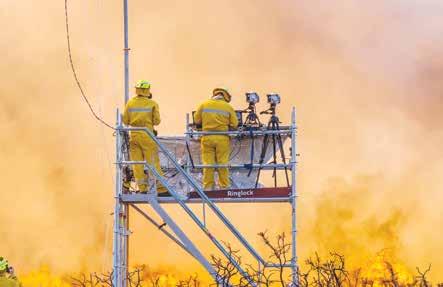
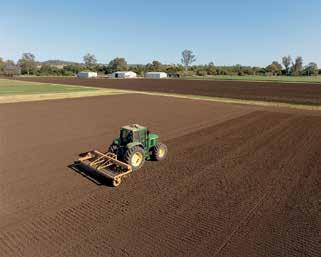
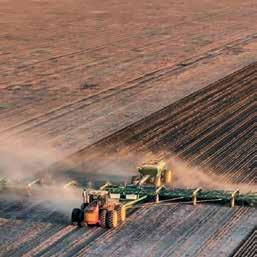
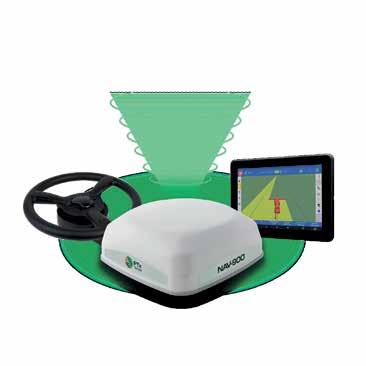
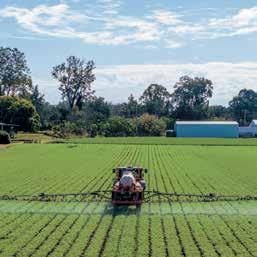
GREAT NEWS for the kiwifruit sector.
The growers’ organisation, New Zealand Kiwifruit Growers Incorporated (NZKGI) says 2025 marks the earliest ever harvest of this fruit and the crop itself is expected to break the 200 million tray mark.
The 2025 kiwifruit harvest has begun with the first fruit picked just outside Edgecumbe in the Bay of Plenty, making it the earliest ever harvest.
On top of that Zespri which markets kiwifruit says the bumper crop is expected to exceed its longstanding target of earning $4.5 billion in export sales.
Zespri chief executive Jason Te Brake says this is a tremendous effort from the industry
and reflects their commitment to building brandled demand, delivering outstanding quality kiwifruit to markets and innovating to create value for growers.
“The forecast per tray returns have strengthened from the last forecast in November for all fruit categories other than Green, which remains in line with November’s forecast,” he says.
Te Brake says at a per hectare level, returns for Green and Organic Green have reached record levels off the back of this season’s improved yields and the strong value secured for fruit throughout the season. SunGold per-hectare returns have also increased from November, while forecast RubyRed Kiwifruit returns remain steady on both a per tray and per hectare basis.

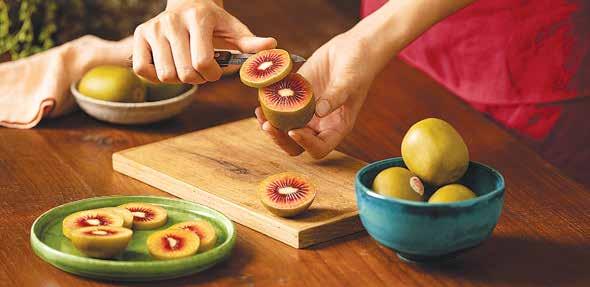
The honour of being the first kiwifruit orchard to have fruit picked went to growers Mark and Josie Ruiter from the Eastern Bay of Plenty. In their case their fruit was the early maturing red
variety RubyRed and this will soon be on supermarket shelves in New Zealand and some overseas markets, followed shortly after by the Gold and Green varieties. The couple say they are very
excited about being the first orchard to have kiwifruit picked.
If the harvest reaches the 200 million tray mark in the coming months, this will be a modest increase from last year’s
record-breaking season of more than 190 million trays. On average, each tray has around 30 pieces of kiwifruit. The harvest traditionally peaks in mid-April and runs through until June.
NZKGI chief executive Colin Bond says he shares growers’ enthusiasm about the current season.
“While my thoughts are with those Tasman and Whakatane growers who received significant hail damage at the end of last December, overall growers have experienced a great lead up to harvest, with ideal sun and little wind, to produce excellent kiwifruit”, he says Bond says over the last few years the kiwifruit industry has been working collaboratively to ensure our supply chain is robust to export increased volumes and deliver high-quality fruit to consumers around the world.
WINNERS OF the 2025 Ford New Zealand Rural Sports Awards will be announced at a gala function in Palmerston North next month.
The awards celebrate the dedication, skill, and achievements of rural athletes, sports administrators, and coaches from across the country.
Convenor of Judges, Paul Allison, highlighted this year’s exceptional calibre of nominees.

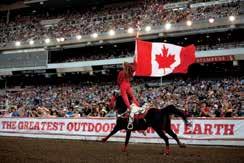
“This year’s nominations set a record, with more nominations for athletes and contributors received than ever before,” says Allison.
“The Ford New Zealand Rural Sports Awards play a vital role in celebrating the outstanding achievements of rural sportspeople, from competitors excelling in their fields to those working tirelessly behind the scenes to ensure
the success of these sports,” said Paul.
Annaliese Atina, managing director of Ford New Zealand, expressed Ford’s pride in supporting the awards and acknowledging the incredible efforts of those involved in rural sports.
“Ford has a long and proud history of backing rural New Zealand, and we are honoured to recognise the remarkable athletes and sportspeople who represent the heart of our rural communities. These awards shine a well-deserved spotlight on the dedication, perseverance, and passion that drive rural sports,” said Atina.
The gala dinner will include sporting personalities Erica Dawson, Tim Southee, Wayne Smith and others joining to help present the awards.
The finalists for the 2025
Ford New Zealand Rural Sports Awards are:
The PTS Logistics New Zealand Rural Sportsman of the Year Award:
• Jack Jordan (Taumarunui) –Timbersports
• Tim Garrick (Gisborne) –Fencing
• Blair Orange (West Melton) –Harness Racing
The RX Plastics New Zealand Rural Sportswoman of the Year Award:
• Steph Dryfhout (Feilding) –Tree Climbing
• Catherine Mullooly (Gisborne) – Sheep Shearing
• Samantha Ottley (Christchurch, formerly Geraldine) –Harness Racing
The Fonterra Young New Zealand Rural Sportsperson of the Year Award:
• Rylee Ward (Cambridge, for-
merly
•
–
•
Other awards include the Ford Supreme New Zealand Rural Sportsperson Award – judges select one overall winner to go home with the Supreme Award.
Nominations to these awards came from rural sports organisations or clubs involved in woodchopping, shearing, horse-riding, tree-climbing, shooting, rodeo, harness racing, highland heavies, gumboot throwing, ploughing and fencing.
The awards gala dinner takes place at Awapuni Racecourse on Friday, 7 March, during the Ford Ranger New Zealand Rural Games Weekend in Palmerston North.





PREPARE FOR more pine trees. That’s the message from North Otago farmer Jane Smith following the new methane emission targets recently announced by the Government.
Smith, a founding member of the Methane Science Accord, says farmers are aghast at the “environmentally ignorant and economically inept” greenhouse gas emissions targets.
“Even worse than previous targets from the Green Party playbook, the Nats have now shown their anaemically weak understanding of science and have instead taken the impotent option of simply demanding higher generic targets,” Smith says.
“We thought we had a coalition who understood the economy, who could see through rampant extremism in climate change positioning and would acknowledge the fact that Kiwi farmers are the best in the world, producing more food with lower emissions.
“We are the only sector in the world that actually utilises a GHG as part of our food production through photosynthesis process, and the only sector with an offset. Pasture-raised livestock are net sequesters of greenhouse gases but this is ignored by our own sector as this doesn’t suit the current ideology.”
Last month, Climate Change Minister Simon Watts announced New Zealand’s second international climate target under the Paris
Agreement.
He unveiled that New Zealand will reduce emissions by 51 to 55% compared to 2005 levels, by 2035.
“We have worked hard to set a target that is both ambitious and achievable, reinforcing our commitment to the Paris Agreement and global climate action,” Watts says.
“Meeting this target will mean we are doing our fair share towards reducing the impact of climate change, while enabling New Zealand to be stronger and thrive in the face of a changing climate.”
However, Smith says these targets are not only unnecessary and misguided, “they now fast-track the destruction of the integrity of our world-class red meat protein production as
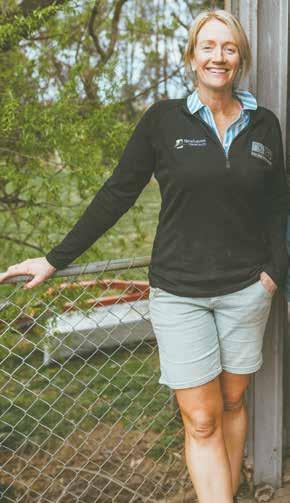
we loom towards feed additives and expensive interference with natural methane processes through a myriad of pointless vaccines, boluses and misguided genetics”.
“The real shame is the waste of taxpayer money and science resources that will be diverted even further towards chasing methane fairies instead of genuine R & D.
“The Government is asking for a fight on this and a fight they will get. We will need individual farmers mobilised in order to do this, as our own sector leaders have simply appeased and agreed – all in the
name of gaining accolades, funding and avoiding embarrassment around the $1 billion that has been squandered on methane ‘reduction’ to date.”
Smith says Watts needs a cold bath of reality.
“At the very same time that his own government demands increased production and growth, he has just cut the wings off the golden goose that would have paid for hospitals and healthcare that we already cannot afford.
“The sad reality is that all New Zealanders will pay for these misguided targets through even higher energy and food costs and continued slower economic growth.
“Prepare for more pine trees.”



BEEF + LAMB NEW Zealand (B+LNZ) has reiterated calls for New Zealand to revise its methane targets after the Government’s “disappointing” announcement of its revised Nationally Determined Contribution (NDC).
B+LNZ chair Kate Acland says the NDC’s
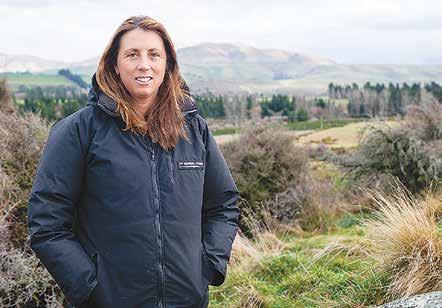
before making targets and that all-gas, all-sector targets made like-forlike comparisons easier in New Zealand.
“A split-gas target was considered at the time of setting both of New Zealand’s NDCs.
B+LNZ SAYS that the results of an independent panel on methane last year found that New Zealand’s current methane targets are too high and could be revised downwards.



(51%) equivalent to the domestic split-gas climate change target, they say that this means achieving the domestic target will also achieve our second international target.
“Setting a single NDC target means we can maintain flexibility in how we achieve emissions reductions across the whole economy, includ
“It was decided a single target for NDC2 would be in New Zealand’s best interests as this provides the greatest flexibility in achieving the target, best shows our progression from NDC1, is more easily comparable to other countries and is transparent in our actual emissions reduction.
“A key judgement for the Government is setting an NDC that represents the highest possible ambition in light of national circumstances.”
However, in the same statement it was said that New Zealand’s high level of sustainable electricity generation was not considered in terms of a split gas target – whether as a limiting factor in scalability of reducing emissions or as an offset to emissions generated.
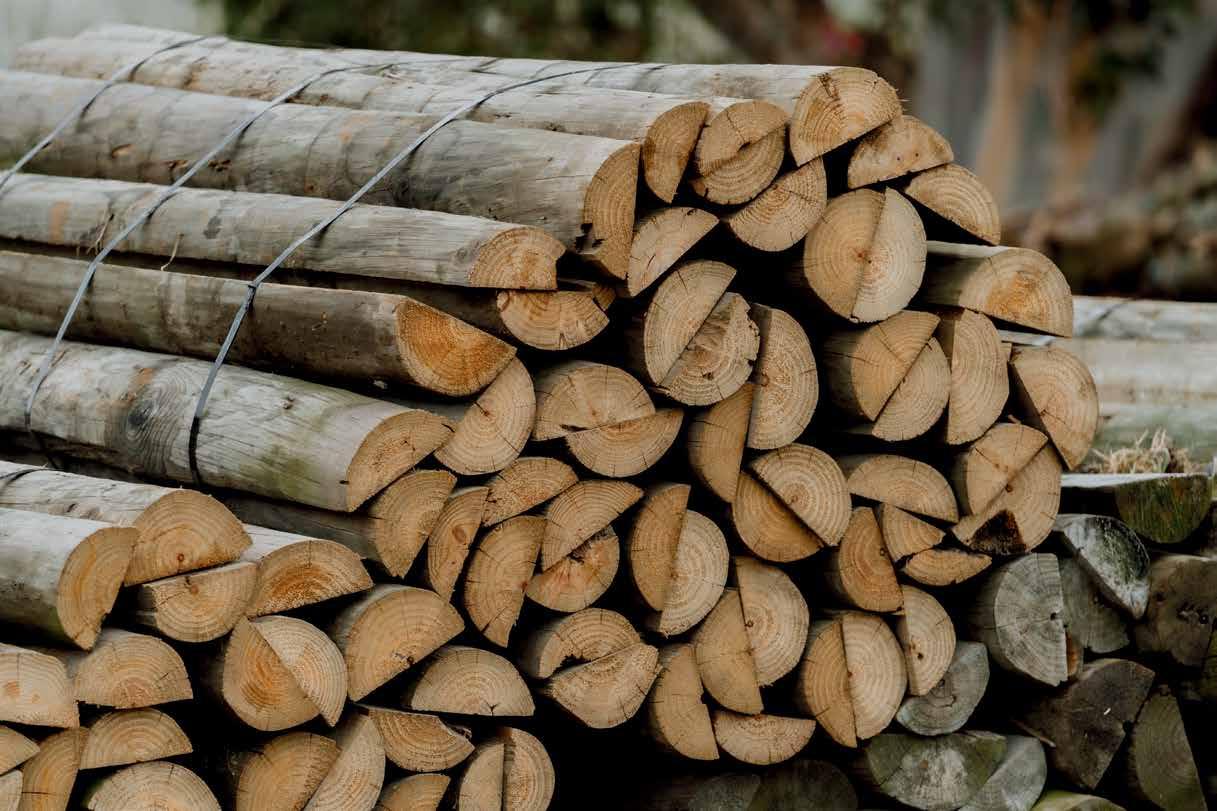
This was of concern to Madeleine Hall, B+LNZ’s climate change programme manager. She says that most GHG emissions in New Zealand are from transport and agricultural sectors who have more limited emissions reduction options before more drastic, unprecedented changes
“This is partially why the country has a strong reliance on carbon removals from forestry to reduce our overall net emissions.” Hall says.
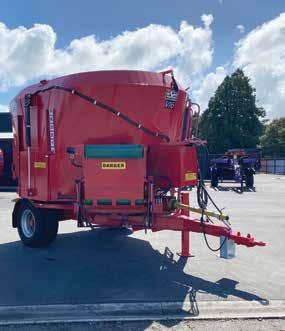
The panel found that reductions in the range of 14-24% by 2050 would see methane not add any additional warming from 2017 levels, depending on how quickly the rest of the world reduces its emissions.
Kate Acland and Madeleine Hall say B+LNZ has long advocated for a review of the targets based on a warming approach. Acland said the panel’s findings were an improvement on current methane targets but would still be a stretch for the sheep and beef sector.
“Methane should only be asked to do what is being asked of other gases, which is to achieve no additional warming. We simply can’t leave the current 47% target hanging there.”
In light of the uncertainty, B+LNZ has reiterated its call for the Government to amend New Zealand’s methane targets.
“Farmers are committed to the environment and absolute emissions from sheep and beef farms have reduced 35% since 1990. We know there’s an expectation that further progress is made in reducing agricultural emissions from food production, but farmers need clarity and certainty.
“We need progress on this issue soon, and we’ll continue to push this case to the Government.”
WITH NEW Zealand’s first NDC aiming to reduce emissions to 50% of 2005 by 2030, with the second aiming to reduce by 51-55% by 2035, Rural News asked the Ministry for the Environment if New Zealand was on track towards reaching those goals.
The MoE says that New Zealand’s first NDC (NDC1) was set at a higher level than the domestic emissions budgets for the same period, to reflect New Zealand’s highest possible ambition as required under the Paris Agreement.
It says the Government is prioritising domestic action – both through emissions reductions in New Zealand and planting trees that absorb carbon – but is considering all options to meet NDC1 including exploring co-operation with other countries.
“New Zealand’s first emissions reduction plan and other climate action has helped reduce the gap between projected domestic emissions reductions and NDC1.
“New Zealand’s recently published second emissions reduction plan will help us to continue to bring down our emissions and further close the gap to NDC1.”
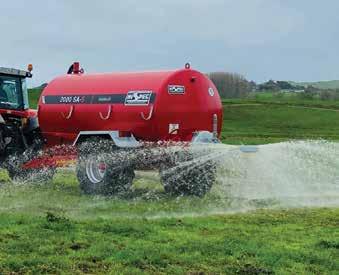
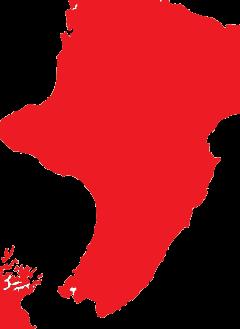
A GOOD crowd is expected for New Zealand’s largest regional field days at Feilding in the Manawatu.
The three-day March event has been running for more than 30 years and attracts exhibitors from around the country with nearly 25,000 visitors from the lower half of the North Island.
The event showcases the latest in primary industry innovations alongside a range of lifestyle exhibits and activities for families and children. The event is spread over 33 hectares at the Manfield racetrack, allowing plenty
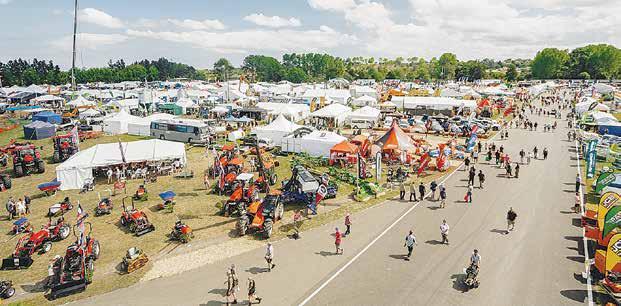
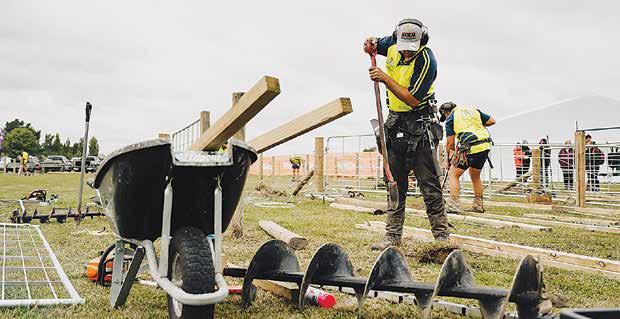

of room for exhibitors and visitors to wander around freely. It’s seen as one of the highlights of the local agri calendar.
According to the organisers, the event is aimed at locals and is an opportunity for farmers to meet with machinery dealers as well as other service providers such as banks, insurance companies, fert reps, contractors and rural professionals who service the farming community in the lower and central North Island.
According to event manager, Jonathan Paul, the CD field days is a “must do agri event”. He says among the 10-plus automotive bands on display is a new e-truck and range of other electric machinery offerings.
“Last year it generated $40 million in sales and provided an invaluable opportunity to have a yarn off farm. People tell us they love the local feel about the event,” he says.
The main sponsor of the event, Brandt, is offering a special deal for children. If they take their used toys to the Brandt stand they can get a new one and the best of the used ones will be donated to local community groups.
One of the features of the event is the “science for farmers” exhibit organised by the Ministry for Primary Industries and in partnership with several science organisations including Massey University.
This is designed to highlight some of the cool innovations that are being developed to help farmers reduce costs and increase productivity. It will also be an opportunity for school children to see some of the amazing technologies that are used on farms and in the wider primary sector.
As well as the exhibits, there are several competitions running throughout the three days.
These include the National Excavator Operation Competition, the Golden Loader competition and Power Fencing Competition. There is also a wood chopping demonstration with competitors ranging in age from 10 to 70 plus years.
Overall, the event is said to be on track to be one of the great showcase events for the primary sector.
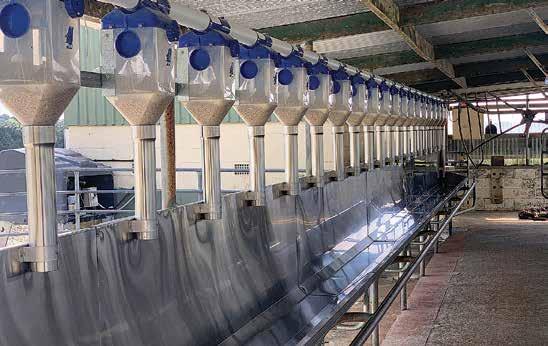
DON’T BE surprised if there is a bit more spending at the Central Districts Field Days this year.
That’s the view of Nathan Guy – Horowhenua farmer, former minister of agriculture and now chair of the Meat Industry Association – who says red meat farmers might be feeling a bit more optimistic given the progressive lift in prices. He says dairy farmers should also be happy with the payout at $10/kgMS.
“I guess given that, those selling something might be hoping for a bit of a bounce,” he says.
Guy has been a regu-
lar attendee of the event over many years and describes it as well organised and a well-oiled machine. He says it is like a “mini-National Fieldays”.
He says the location at Feilding is very accessible for people in the lower North Island and the setup of exhibits makes it easy for attendees to see what they want.
“For me as a local, I have taken the kids along for a day out, but I have also been there as minister,” he says.
Meanwhile, Suze Redmayne, the MP for Rangitikei, in whose electorate the CD Field Days is held, says she’s been going to the event for more than
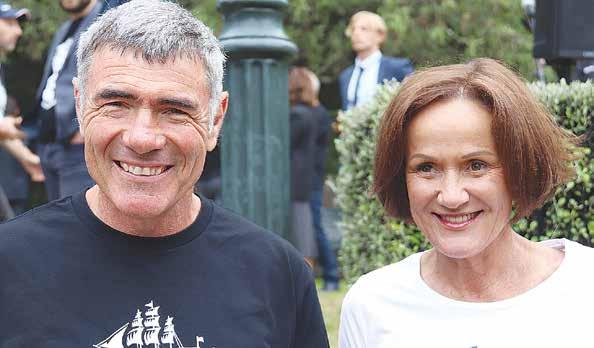
25 years. But getting there for the whole three days this year has presented
her with a challenge.
“The problem for me is that this year the field days are being held in a sitting week in parliament, but Thursday is farmers’ day, so I have got my leave applica-
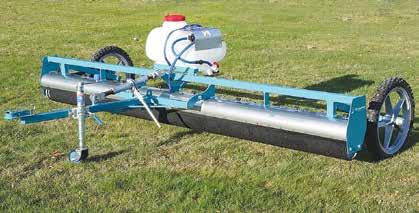

tion in early. I have been invited to speak on the Ravensdown panel, so hopefully that will get me there for the whole three days,” she says.
Redmayne says CD Field Days is an out-
standing event, great for the region and the whole farming community. She says the attraction for her is the mixture of days, with Thursday being a day when farmers tend to come along from as
far away as Hawke’s Bay, Taranaki, Wellington and Whanganui.
“It’s their opportunity to meet other farmers; talk and to other agencies such as banks, insurance and fertiliser companies. Whereas Fridays seem to be focused on school kids, which is good because we need to encourage young people to get into the farming industry. After all, that’s what pays the bills in this country,” she says.
Redmayne says Saturday tends to be for families who come from far and wide to enjoy the day, see tractors and other machinery and get a great perspective of agriculture.
“Do you know a boy who doesn’t want to see a tractor or a digger?”
@rural_news facebook.com/ruralnews
THE THREE-DAY Central Districts Field Days site is wheelchair accessible via the main entrance off South Street.
However, once inside the event accessibility to some areas may vary depending on ground and weather conditions, according to organisers.
For mobility parking, enter off South Street and follow the signs for mobility parking. Mobility scooters are available for hire Mobility Manawatu, and they can be picked up from the gate.
To book please call 06 357 7943 or email. There is a donation of $20
per half day for mobility scooters to Stroke Manawatu.
Tickets can be purchased online from CD Field Days website for those who want to avoid the queue at the grounds.
Visitor gates open at 9 am and close at 4pm each day.

■ Ideal for shearing sheep, alpacas, goats and cow tails.
■ Variable speed from 2600-3500 rpm.
■ Latest brushless motor technology means minimal heat build up
■ 1400gms means 100-200gms lighter than standard handpiece.
■ At 2800 rpm the 12-volt lithium battery will crutch 300-400 sheep or trim 400-500 cow tails.
■ We customise cables for lifestyle shearers.
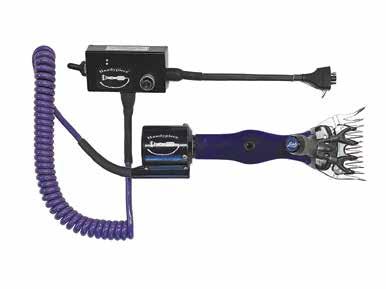

IT IS a privilege to welcome you all to this year’s Central Districts Field Days, the country’s largest regional field days.
Central Districts Field Days is a ‘must see’ event for all ages and demographics providing a national stage for both the region and the agricultural industry. As you will experience, Manfeild transforms into an outdoor event space for friends and families to gather, for attendees to learn, and extends a renewed appreciation for the region’s leadership in agricultural production.
The Manawatu District has some of the best soils in the country, hosts leading academic and technological expertise and the largest livestock saleyards in the Southern Hemisphere. Agriculture
is part of the Manawatu District’s history with the strong primary sector, agri business and agri tech being our leading economic driver.
It remains the backbone of our community with the CD Field Days event giving locals and visitors alike, the chance to celebrate the incredible spirit of our farming community while honouring the hard work, innovation, and dedication that goes into feeding and nurturing our region, country and the world.
Feilding is also the district hub for agricultural businesses hosting depots and regional offices for many. These businesses employ reps from across the district while supporting our local economy in much the same way as the saleyards.
As a farmer myself, I
believe there is nothing more valuable than the resources of our land and those who work it.
On the brightest of days when there has been enough rain, enough sun, high enough payouts and low enough interest rates it can be the most rewarding of careers and yet like all things the cycle fluctuates and some days it feels harder and more challenging than others. Yet, as farmers we know that just as the seasons change, so too does the industry and once again the wave will right itself if we show the perseverance to ride it.
Committed to a secure and resilient food system for Manawatu and beyond, Manawatu District Council has partnered with Palmerston North City Council and Central Economic Development Agency to
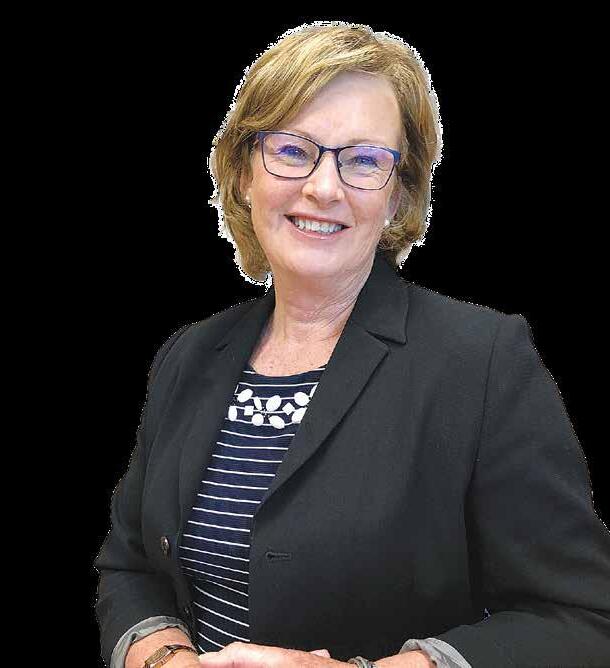
Manawatu District Mayor Helen Worboys
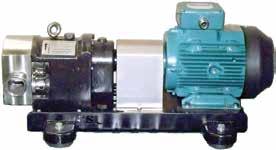




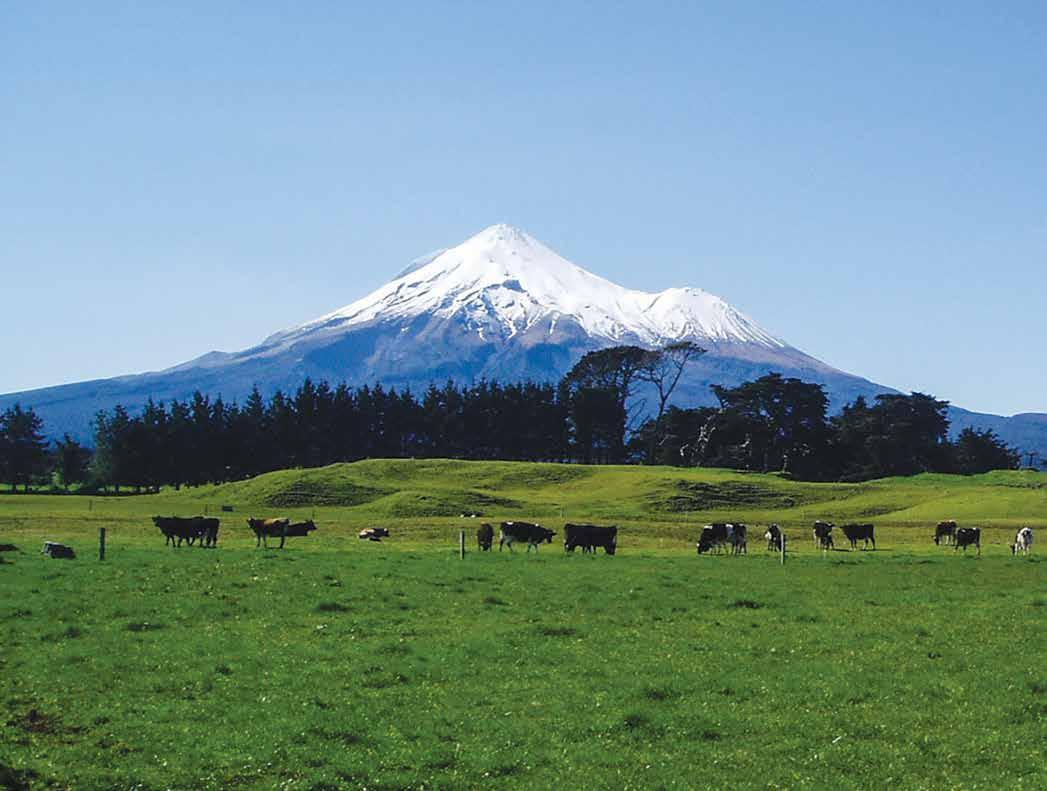


MASSEY UNIVERSITY
is regarded by many as New Zealand’s leading tertiary education and research institute for the country’s primary industries.
According to the head of Massey’s school of agriculture and environment, Professor Paul Kenyon, the undergraduate programmes for this year are well underway.
This includes the traditional programmes of the Bachelor of Agricultural Science, Bachelor of Horticultural Science, Bachelor of Agribusiness and Bachelor of Animal Science. He says this year the school has launched a new programme, the Bachelor of Earth and Environmental Science (BEES).
Kenyon says the new degree includes two majors, land and water science and geoscience and offers students a pathway to new knowledge and skills in the relationship between landscapes and primary production. BEES sits alongside and aligns with the school’s agriculture, horticulture and animal science programmes, “creating new sustainability pathways for graduates”.
“Our primary industries need future employees that understand not only environmental management and science but also understand our production systems,” he says.
Kenyon says a longstanding feature of Massey’s agricultur-

ally based degree programs is the ability for those who wish to stay in the regions, to work while studying part time (sometimes full time) via distance. He says this allows those who wish to complete a degree, to do so while reducing the costs of travelling for
their education and not needing to be away from home. For many students this is a great balance between gaining a tertiary education while being employed.
“Massey University is finding more students are taking the opportunity to enrol part time
or full time via the distance/online teaching modes and, with the cost of education growing, this option will continue to gain popularity,” he says.
Kenyon says university education should be led by research and Massey is experiencing significant growth in post graduate student numbers, both domestic and international students. He says these are helping to drive the large numbers of research projects Massey has underway and they help Massey maintain its number one ranking in agriculture.
He notes that this research is also an important part of the education of the undergraduate students, as it ensures they are learning world lead-
ing, up-to-date information in their programmes.
Professor Kenyon says the research at Massey not only aims to increase productivity and profitability of our primary industries, it aims to do so in an environmentally sustainable and animal friendly manner.
“Massey’s research is heavily aligned to industry needs and contains a range of industry partners, ensuring the right questions are being asked and the solutions farmers need are being found. As part of creating pathways for the next generation, Massey has a strong working relationship with Horticulture and Agriculture Teachers Association (HATA) which has been positive for both groups,” he says.
A KEY element in Massey University’s research programme is its Farmed Landscapes Research Centre (FLRC).
The centre has a core mission to build nation-wide capability and capacity that helps achieve improved freshwater quality outcomes in rural catchments across New Zealand.
An example of this work is the Catchment Solutions Project (CSP) funded through the Ministry for Environment (Essential Freshwater Fund), in collaboration with cofunding from Hawke’s Bay Regional Council (HBRC) and in-kind contributions from DairyNZ and Hawke’s Bay Regional Council.
The head of the FLRC and professor in environmental science is Professor Chris Anderson, who says the project is working with case study catchment groups to co-learn and
map key water quality contaminants and their critical flow pathways from farm-to-catchment-scale.
He says co-design of a series of water quality testing events, catchment workshops, field days and professional training (master classes) with the broader farming community, iwi/hapu and rural support providers is sharing valuable community perspectives around freshwater outcomes.
CSP has now completed three woodchip bioreactors, two Detainment Bunds PS120 and one constructed wetland. Construction has also begun on a twin basin design woodchip bioreactor within the Waingongoro catchment (Taranaki).
Anderson says the CSP team recently held four successful master classes: Constructed Wetlands for
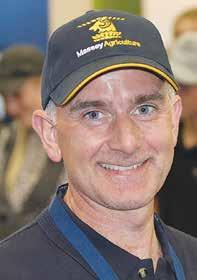
Management Technologies; and Mapping, Design
and Implementation of Detainment BundsPS120 (DB). All three master classes involved in-person training and on-farm site visits to learn more about the mapping and design of mitigation structures for freshwater contaminants.
“We plan to run a second round of all four master classes before the end of June 2025. These new courses complement FLRC’s existing courses around sustainable nutrient management, GHG emissions and freshwater farm planning,” he says.
Anderson says interest in the new courses has been impressive, particularly for the Constructed Wetlands Masterclass, run by NIWA scientists Dr Chris Tanner and Dr Brandon Goeller; over 80 people registered interest in the first Constructed Wetland course, and over 120 for the

Massey also partners with the New Zealand Young Farmers and the Rural Games Trust. With all groups, Massey co-creates educational material to not only educate the students but to also encourage young people to consider agriculture and horticulture as a future career option. It is also creating material specifically for teachers to use in class for their NCEA teaching. Massey with its partners also has many hundreds of thousands of dollars in scholarships available for under- and post-graduate students to reduce the burden of education and to help ensure the primary industries attract the best and brightest.
second course, scheduled for 27 and 28 February. Both courses are limited to a maximum of 25 spaces.
“Participants in the master classes have been very satisfied with the quality of the content and the effectiveness of the presentations, with one participant noting ‘I felt engaged throughout the entire course; it was well-structured and informative’. The field visits were also highly rated, with one participant reporting “the field visit was the highlight of the course; it allowed us to see real-world applications of what we learned.”
The website also holds information about each of the six catchments the team has been working with: https:// catchmentsolutions.co.nz/case-studycatchments/
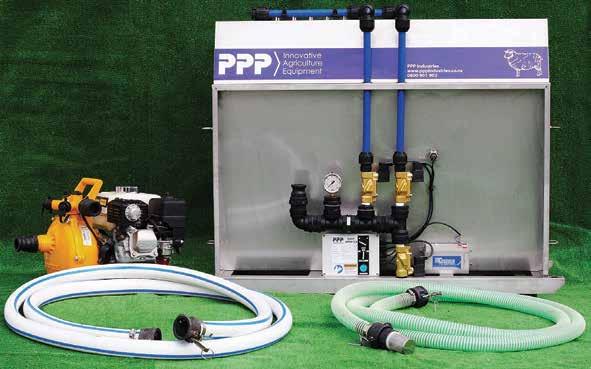
WHEN VISITING the Central District field days, make sure you pick up a free copy of Farmstrong’s Getting Through book.
More than 5,000 copies of Farmstrong’s Getting Through book have been distributed around the country so far. With another 5,000 printed, Farmstrong is hitting some of the coun-
the wisdom and experience of other farmers and growers.
“These resources are full of practical, actionable advice about what works and what doesn’t when you’re facing a longhaul recovery. That’s why we’re keen to get as many people across them as possible,” says Vaughan.
“It is a new year,
The book, and its accompanying website, includes a toolkit of mental skills and daily habits designed to help people manage workload, stress and pressure.
try’s regional field days to distribute the resource even further.
Getting Through was officially launched in November and features the stories of more than 20 farmers, growers and industry leaders. Their stories were captured following the cyclones and floods of 2023 and the book discusses what it takes to get through severe weather events.
The book, and its accompanying website, includes a toolkit of mental skills and daily habits designed to help people manage workload, stress and pressure.
Farmstrong programme director Gerard Vaughan says the uptake of the book had been very encouraging and demonstrated how much the rural community valued
but with that comes the unknown. Getting Through is a tool for not just farmers and growers, but anyone facing uncertainty or tough times.
“I really encourage anyone visiting any of the field days or shows this year to come and find us on the Farmstrong stand. We are always up for a chat and we will have free copies of the book available for you to take home and read in your own time”.
Apart from the Central District field days next month, Farmstrong will also be at the Northland Field Days this wee and the Wanaka A&P Show in March and the South Island Agricultural Field Days in Kirwee next month.
Farmstrong would also be setting up along-
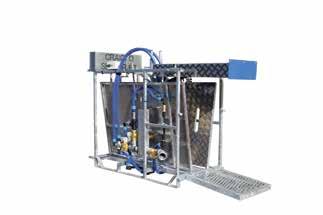
side FMG at the Mystery Creek Fieldays in June where the rural wellbeing programme would acknowledge its 10th birthday.
Free copies of the book can also be
requested via emailing info@farmstrong.co.nz.
Getting Through was made possible with the support of Ministry for Primary Industries, Health New Zealand Te Whatu Ora and Rural Support Trust. For more information visit: https://gettingthrough.farmstrong.co.nz/.







SAFER FARMS, the industry-led organisation dedicated to fostering a safer farming culture, has appointed Brett Barnham as its new chief executive.
Lindy Nelson, chair of Safer Farms, says Barnham brings a combination of personal experience, professional expertise, and passion for making a difference in the farming community.
“His leadership in high-risk environments, coupled with his deep understanding of the challenges farmers face, makes him the ideal person to lead Safer Farms into its next chapter. We look forward to the positive impact he will make alongside our team, farmers, and indus-
try partners.”
Having grown up on New Zealand farms, Barnham says he is excited about joining Safer Farms.
“I have seen firsthand the impact of poor health, safety, and wellbeing practices, along with the toll of the ‘she’ll be right’ attitude.
“I’ve led teams and organisations in high-risk sectors, including defence and adventure training. Too many farmers are still getting hurt, and this ripples through families and rural communities.
“I want to acknowledge the commitment many farmers have already shown in making changes so they can farm safely and the hard work
and dedication from the Safer Farms team.
“I am looking forward to working closely with farmers and the industry, so we can drive meaningful change for safer farming in New Zealand.”
Barnham was formerly the manager of site operations at ACC. His diverse career includes roles as area manager at AsureQuality, senior team leader at Hamilton City Council, partnership ranger at the Department of Conservation, and general manager at The Blue Mountain Adventure Centre. He also served as a non-commissioned officer in the Australian Defence Force.
In taking up the fulltime role at Safer Farms,
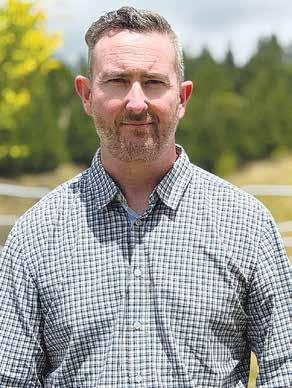
Safer Farms and the rural sector.
“The Safer Farms chief executive role is transitioning from a part-time position to full-time. Stephen’s leadership has been instrumental in building a strong foundation for Safer Farms. He played a key role in the launch of the Farm Without Harm strategy and developing our partnership with ACC.”
Earlier this month, ACC and Safer Farms announced a new partnership to reduce harm, injuries, and fatalities in the agricultural sector.
The partnership will see over $11 million invested by ACC over the next five years, supporting the agriculture sector
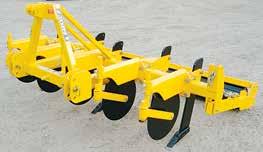
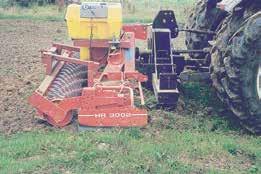

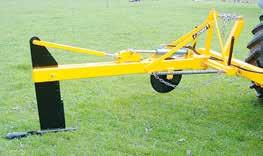



in the implementation of Safer Farms’ innovative grass-roots Farm Without Harm strategy.
Safer Farms’ Farm Without Harm strategy is a sector-wide commitment to drive practical changes that prevent physical and mental harm. The key focus areas in the action plan are:
• psychosocial risks resulting in diminished wellbeing
• harm experienced while working in and around vehicles and mobile plant
• muscular stress and injury caused by livestock handling
• harm caused by exposure to agricultural chemicals and airborne risks.

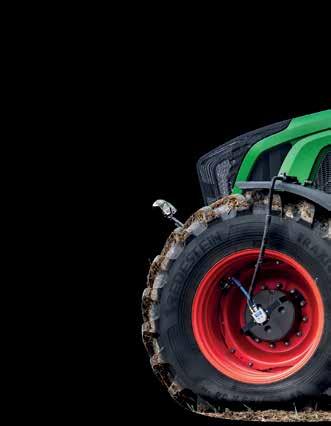
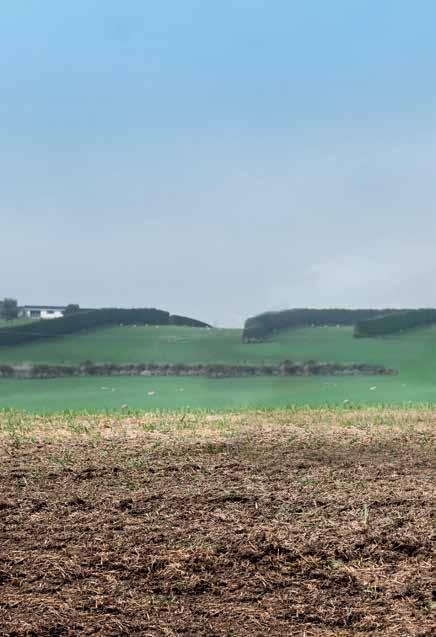

A MASSEY University student has inched closer to national victory after being crowned TaranakiManawatu’s top young farmer, despite being the youngest competitor in the field.
Jock Bourke, 19, was announced as the winner of the Taranaki Manawatu FMG Young Farmer of the Year on February 8, after spending the day competing in a series of challenges at the Stratford A&P Showgrounds. As the youngest contestant in the regional final, Bourke proved that age was no barrier, outperforming a strong line-up of experienced competitors.
The FMG Young Farmer of the Year competition is dedicated to showcasing the very best talent in New Zealand’s food and fibre sector.
Now, in its 57th year, the title of FMG Young Farmer of the Year is held as the most prestigious farming award in the country.
“I was shocked to see my name at the top of the leader board heading into the quiz, and to take out the win was really exciting,” says Bourke.
“I loved the entire day, the committee put on an amazing event, and the other contestants really pushed me to do my best.”
Participants entered one of three catego
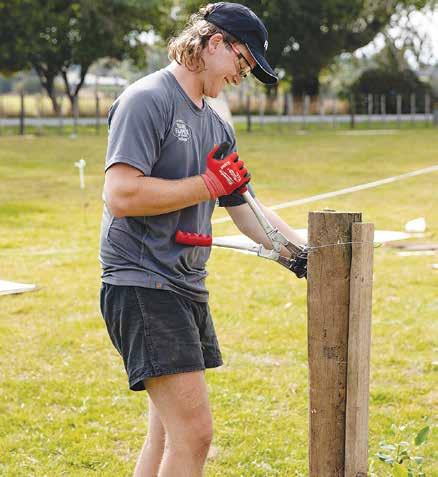
ries based on age, ranging from the AgriKidsNZ competition for primary school pupils, the FMG Junior Young Farmer of the Year for high school students, and the tightly fought FMG Young Farmer of the Year category, where just seven contestants battled it out for the top spot.
Bourke edged his way to victory by clocking up the most points on the day (274.75 points), defeating Opiki Young Farmers member Sheldon Mayo who finished up with a score of 268. Ethan Muir from Central
Taranaki Young Farmers nabbed the final spot on the podium.
With several individual challenges thrown their way, including a head-to-head, general knowledge ‘buzzer-style’ quiz and sponsor-led modules, contestants were tested on a broad range of practical skills, technical know-how, and their ability to cope under pressure.
“I really enjoyed the Farmlet challenge, it was a great way to show off my skills, and I was confident in what I needed to do. Building a chicken
coop out of recycled materials definitely came with its challenges, but thinking on my feet helped massively,” explains Bourke.
“There’s a lot of preparation ahead for the Grand Final. I’ll be studying up on a bit of everything, especially sponsor knowledge and my agribusiness skills, to make sure I’m covering all bases.”
The AgriKidsNZ competition was another crowd-favourite. After a busy morning being challenged to their industry know-how, Rosie
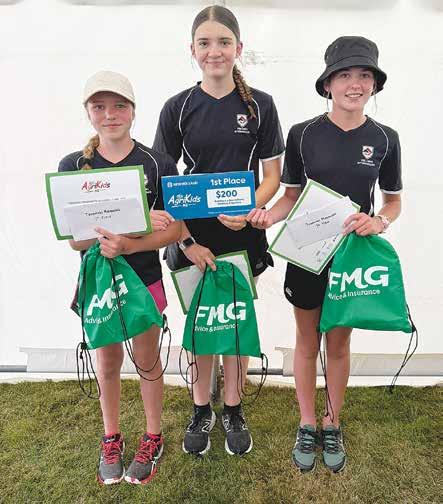
Baxter, Kendyl Humphrey and Emily Angove from Feilding Intermediate emerged as the region’s victors. Arie Jochem, Walter Tweedie and Quinn McNie, also from Feilding Intermediate, placed second, just ahead of Millar Mathews, Alannah Connor and Alex Mathews from Ross Intermediate.
Meanwhile, Haylee Baker and Kate Hopkins from Feilding High School took out the title of Taranaki Manawatu FMG Junior Young Farm
ers of the Year, ahead of Charlotte Askin and Tabitha Askin from Palmerston North Girls’ High School.
Along with Bourke, the top AgriKidsNZ and FMG Junior teams will now compete in July’s Grand Final in Invercargill.
New Zealand Young Farmers Chief Executive Lynda Coppersmith says the competition continues to highlight the incredible skill and talent of young people in the food and fibre sector.
“Every year, we see
more emerging talent stepping up to the challenge. It’s awesome to witness so many competitors putting their skills to the test and showcasing the depth of ability in our industry.”
The FMG Young Farmer of the Year contest is supported by FMG, Ravensdown, Woolworths, Ministry for Primary Industries, Milwaukee, Honda, Lincoln University, Massey University, PTS Logistics, New Holland and Bushbuck.













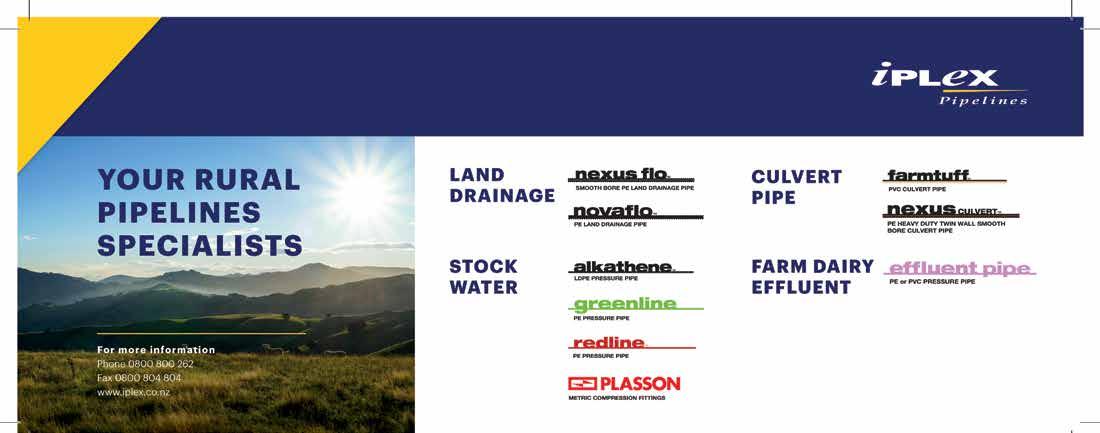
DESIGNED TO allow customers to adopt technology and reduce costs, John Deere’s Precision Essentials Programme, offers those customers the option to either buy all their precision agriculture (PA) technology upfront, or select only the hardware and software that will be most valuable to their business.
The programme allows up front savings on the purchase of machinery by asking users to pay for technology they see as most impactful for their unique farming operation.
Through the program, farmers will also be able to ensure machines have the most up-to-date technology, without the need to purchase new equip-
ment, and retrofit legacy machines with tech that brings them in line with modern requirements
Farmers without JD equipment can also opt into Precision Essentials to introduce leading tech to any machine.
John Deere ANZ production and precision ag marketing manager Royce Bell said the programme was driven by a commitment to make technology more affordable, by lowering upfront costs; accessible, by ensuring customers select only the tech they need; and adaptable, by allowing farmers to scale up or down as their operation demands.
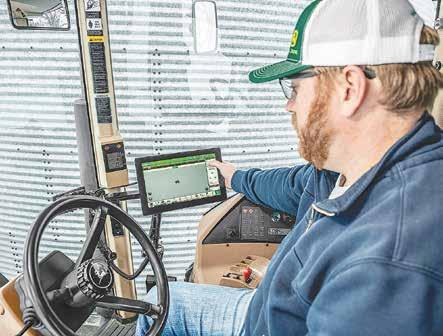
“Precision Essentials really changes the way that farmers can think about the feasibility of implementing PA technologies and how often they can upgrade to better systems,” Bell said.
nology and then expand as it fits their farm.”
Rolled out for the first time in the US last year, the system has become popular across all types of farming operations and commodity types.
Satellite Maps and Machine Sync.
Customers will be able to incorporate all the software updates that come with the G5 family and G5 Advanced package and with the option to upgrade any licence at any point during the year.
“We’ve given a lot of thought as to how we can tackle the challenge of improving uptake of innovation and the reality is that many farmers only use the elements of the technology they most need, or are most comfortable with, or is most affordable,” Bell said.
By offering a choice of buying everything upfront, as is the norm today, or alternatively purchasing Precision Essentials, customers can
“Our goal is to help farmers, regardless of farm size, crop or livestock operation, incorporate the PA technology that’s right for their farm.
tailor to their own operation at a lower initial cost.
“New licensing options also provide customers newer to precision ag technology the opportunity to try a tech-
Farmers are said to be rewarded with lower entry cost on their PA core hardware, via The Precision Essential package which comprises a Precision Essentials Hardware Kit comprising G5 or G5PLUS Display, StarFire 7500 Receiver and JDLink M or R Modem, alongside a choice of four renewable software licenses that encompass singular or combined versions of AutoTrac, Section Control and RowSense, SF-RTK , AutoTrac Turn Automation, AutoPath, In-field Data Sharing,
INCREASED EFFICIENCY has been a key driver for New Zealand’s farmers to meet the challenge of increased demand with fewer resources.
In addition, farmers are dealing with variable climate conditions that impact water accessibility – some regions having more than enough rainfall while others are more prone to drought. Increasingly, they are looking to precision ag technologies to be more efficient in how they manage and deploy natural resources, including water use.
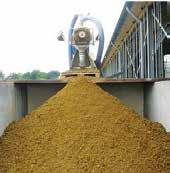
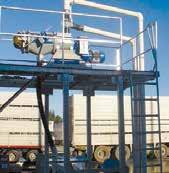
Land-forming is an often-underutilised strategy that can deliver value by enabling the use of water more efficiently, to positively impact return on investment (ROI) via increased crop yield and reduced irrigation costs.
PTx Trimble’s recently launched water solution, WM-FieldForm, enables farmers to control the movement of water onto, off and within fields. The solution moves landforming capability into GFX Series Displays by utilising the Precision-IQ software platform and offers much of
the same functionality of FieldLevel II with a new feel, improved visualisation and enhanced tools and features.
From a simple topsoil levelling project, right through to complex multi-plane land-forming, grading, levelling or terracing projects, the system offers optimised water distribution. For those with excess moisture, this might mean reduced erosion and nutrient leaching or yield-loss prevention from ponding. For those in drought prone regions, optimised water distribution offers reduced
moisture run-off and improved management of expensive irrigation water.
Typically, in the first year after land-forming, users report an increase of up to 30% in crop yields, greater positioning accuracy through top-ofthe-line GNSS corrections and more uptime to get the work done quicker.
By simplifying every stage of the process, including design, execution and verification, WM-FieldForm enables farmers to form and/or maintain fields on their own, removing the need to hire contractors to manage


“Every farmer is at a different point on the PA journey, and for Australian and New Zealand agriculture to realise its full potential, it’s important that new pathways are provided for.”
such projects, offering cost savings on labour resources.
As part of PTx Trimble’s commitment to a retrofit-first, mixed-fleet strategy, WM-FieldForm integrates with the GFX-1260 display and the NAV-900 guidance controller. Users simply need to add a NAV-900 and hydraulic machine controls to a bucket scraper to achieve greater positioning accuracy and more uptime to get the work done faster. Learn more at www.ptxtrimble.com.
– Mark Daniel
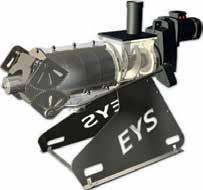

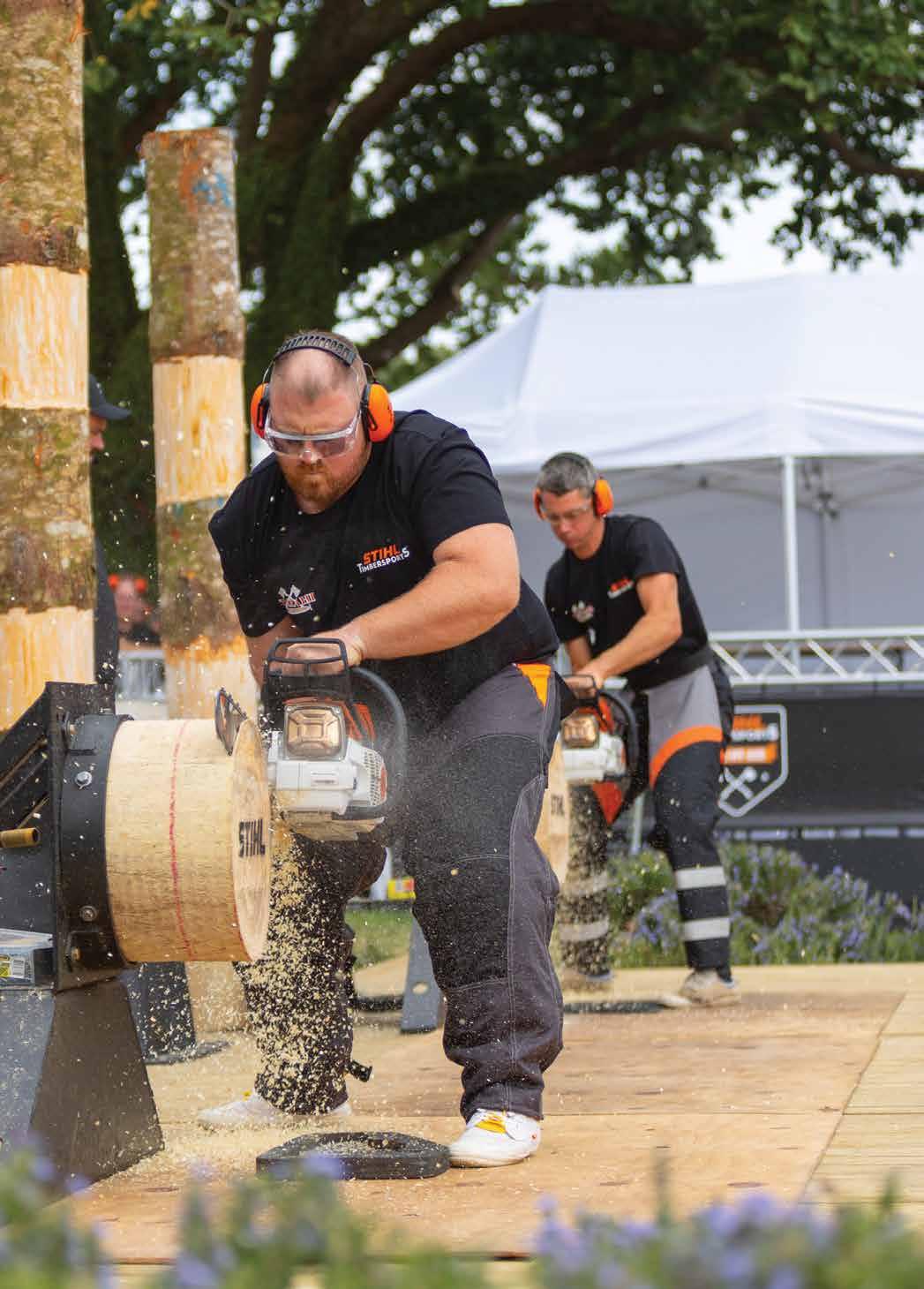


MARK DANIEL markd@ruralnews.co.nz
YOU CANNOT go far in farming without encountering fasteners such as nuts and bolts, given that expensive plant, machinery and buildings are held together by them and your gates would not fill gateways if they were missing.
It’s a sure bet that every farm workshop will
have a bucket, drawer or bin with a wide selection of new or used nuts and bolts, but what’s the correct bolt to use in a particular situation?
Fasteners have a basic code or a language that needs to be understood depending on the application, for example, fastening a heavy gate hinge doesn’t require the same qualities as that of a fastener holding a piece of
rotating machinery.
Metric fasteners are classed using the ‘ISO’ (international Standards Organisation) designation.
A mild steel cup head, typically known as a coach bolt and its corresponding nut, will be ideal for that gate hinge on a gate hinge, with the benefit of being a hot dipped galvanised product (HDG) that will last
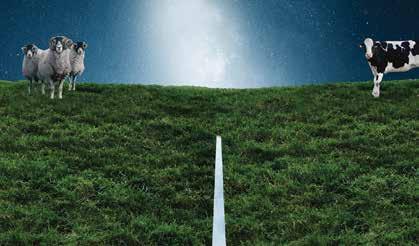




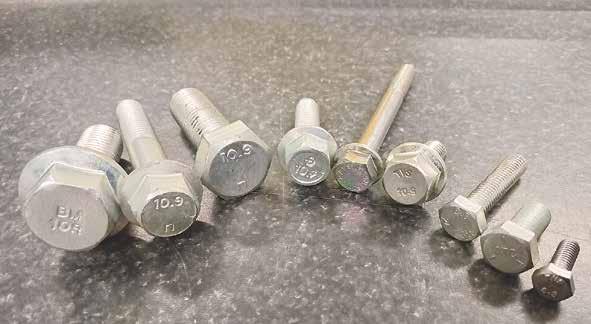
for an exceptionally long
However, looking more closely at agricultural equipment, the original fasteners are purposely made to do the job safely, so rummaging in the “odds and sods” bucket to find a replacement that is not the same grade as the original could lead to a cata-
To identify the strength of a fastener, the head of the bolt will be blank or stamped with numbers. A blank bolt head, or the numbers 4.6 or 4.8, will indicate ‘mild steel’. A high tensile, typically used in demanding applications, will typically start with an 8.8 marking and depending on the application move upwards through 10.9 and 12.9 indicators.
So, what do these figures mean? The first digit is the ‘tensile’ strength of the fastener, strength in megapascals x 100 (e.g.
mild steel = Class 4.6 and high tensile = Class 8.8,10.9,12.9 etc).
The second digit is the fastener’s ‘yield’ point; being a percentage, e.g. a number including ‘.8’ equals 80% of the original tensile strength when an applied force takes the fastener from an elastic state to a plastic state.
In basic terms, the fastener is “stretched” or “yields” when under load, to the point that it cannot return to its original state and breaks.
Class 4.6 & 8.8, etc refers to ‘Metric’ fasteners, however ‘Imperial’ UNC, UNF and other thread forms, are referred to as Grades. The fastener industry groups ‘non-metric’ fasteners into the Imperial category as measurements are based on the imperial inches system.
The American Society of Automotive Engineers, (SAE) created a
LLOYD ALTHAM is a lifestyle farmer with a past career in engineering and the fastener industry. Frustrated by fencing battens slipping laterally, he set about designing, manufacturing and testing the Batten Buddy over five years.
The result is a patented fastener that when hooked over a 2.5mm high tensile fencing wire and screwed to the batten, ensures the batten is held securely in place.
similar system to metric, but instead of using numbers, uses dashes to identify the base material, its hardness range and strength of a fastener.
The Imperial identification method uses radial lines stamped on the bolt
head, with no markings identifying mild steel, with three or more lines signifying high tensile steel. Correspondingly, nuts have identifying notches and dots to suit their equivalent bolts. In NZ, to avoid any issues, the majority of Black or Zinc plated nuts will be high tensile items, the exception being HDG nuts, which are tapped over- size to offer extra clearance when used with a thicker galvanised bolt thread.
Looking at Imperial fasteners, most imperial fasteners sold in New Zealand will be Grade 5 (High Tensile) or higher, except for a bolt with as BSW (British Standard Whitworth) profile or similar. BSW is sometimes called a ‘dead’ thread, typically sourced via a specialist supplier for those customers undertaking a vintage restoration project. www.battenbuddy.co.nz



AFTER ESTABLISHING
its own engine facility in the UK in 2004, followed by an Indian plant in 2010, JCB currently builds around 500 of its Dieselmax engines every day and hit the one million units milestone in late 2024.
Over the last few years, the enthusiasm of JCB chairman
Sir Anthony Bamford for hydrogen combustion appears to be starting to pay dividends, as 11 licensing authorities across Europe have been approved for the general sale of hydrogen-powered machines. These include
the Netherlands, Britain, Germany, France and Spain, with more countries expected to follow suit later in 2025.
A JCB spokesperson suggests that clearing this hurdle is a landmark moment in the development of this alternative fuel, with the decisions reached by the company’s dogged determination.
Looking at the broader picture, other engine manufacturers have adapted engines to run on hydrogen and offer them as a variant of their ICE offerings. By contrast, JCB has taken a more integrated approach, by designing machines for hydrogen power rather than
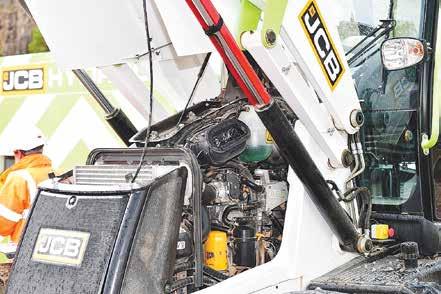
optioning an add-on.
Sir Bamford believes that starting the new year with these certifications in place in so many countries bodes well for the future of hydrogen com-
bustion technology. He also notes that JCB has shown that hydrogen combustion is a proper zero emissions answer for construction and agricultural equipment and
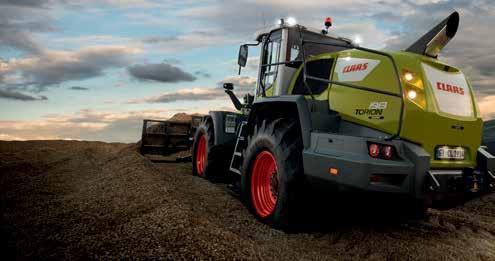
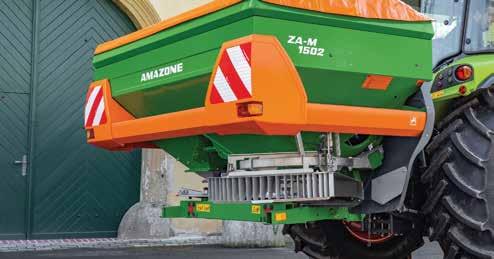
has a major part to play in moving away from reliance upon mineral oil.
The Type approval/ certification of the hydrogen engines will pave the way for the sale and use
of them right across the UK and Europe, while also complementing battery-powered electric industrial and construction machines.
The company claims to have produced 130 evaluation engines which are currently powering backhoe loaders, Loadall telescopic handlers and generator sets, leading to real world testing of the equipment on customers’ sites at an advanced stage.
As well as producing a viable alternative to diesel power, JCB is also looking closely at the distribution and storage of hydrogen, having teamed up with investment specialists HYCAP, and an
Oxford-based hydrogen engineering company called HydraB, to form a new joint venture called HyKit, to deliver the required fuelling and storage infrastructure. This year the new company will build a range of products to assist hydrogen distribution, including mobile compressors, storage tanks and refuelling systems.
HydraB, formed by Lord Bamford’s son Jo, has a wealth of experience in this field, having spent a great deal of time and energy promoting hydrogen as an alternative fuel in the UK, much of it gained by being owners of Wrightbus in Northern Ireland.

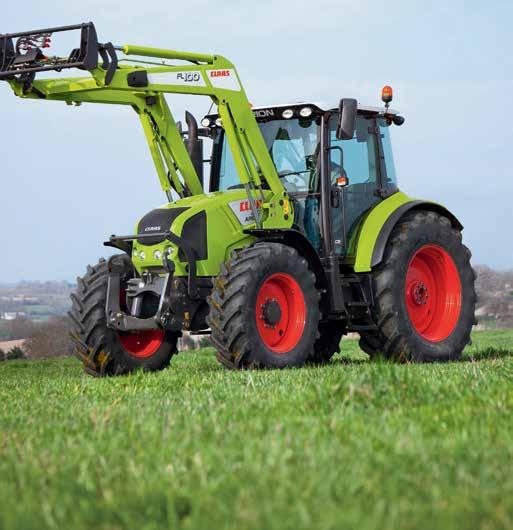
AGCO HAS released details of the new SB.1436DB small square, or conventional baler, that rather unconventionally, produces two rows of bales per field pass, so doubling the output over a traditional single baler producing 14-by-18-inch bales.
Aimed at commercial hay producers to meet the challenges of greater field performance, unmatched bale consistency and industry-leading uptime, the SB.1436DB “addresses the increasing pressure from labour shortages, tight harvest windows and
demanding quality standards,” said Dane Mosel, marketing manager, Hesston by Massey Ferguson. By producing two rows of bales per pass, the machine effectively doubles capacity, reducing the need for additional labour, equipment and fuel. The 105-inch pickup width, said to be the widest width in the high-capacity small square baler industry, improves field efficiency and reduces labour needs by optimising movement of hay into the baler. SimplEbale offers an advanced electronic monitoring and control system that automates critical baling processes, helping to ensure consis-
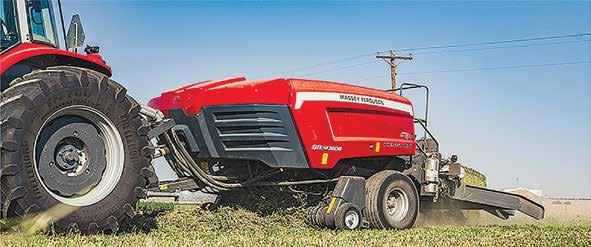
tent bale density, weight and dimensions. From the cab, operators can monitor flake thickness, flake count, bale length and bale weight in real time, ensuring maximum throughput the working day.

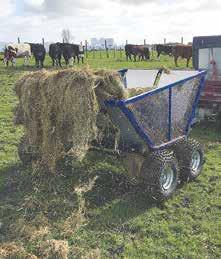
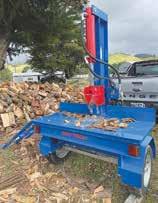
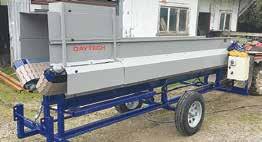

“This can cost over eight hours of additional baling time,” said Mosel. “SimplEbale eliminates this issue by automating bale production, helping operators achieve better results.”
Operating at 90 strokes per minute with a 21.9-inch stroke
length, the MF SB.1436DB requires a tractor of 120hp to help it deliver a target bale weight of 40 pounds, made up of 12 flakes and secured by two twines. The company suggests an operator can produce 71 bales or 1.43 tons per hour by just averaging two extra flakes
per bale.
In operation, hay is conveyed into a single 14-by-36-inch chamber and separated via a splitting knife to create individual 14-by-18-inch bales. From there, it passes through a common density system that ensures consistent compression,
with independent knotter trips on either side of the baling chamber for precise bale lengths.
Completed bales are dropped through the bale chute into independent rows, simplifying handling and transport. The independent knotter trips improve bale length consistency at preset lengths between 24 and 52 inches, allowing for a more standard product, despite windrow or operator inconsistency.
Twine capacity of up to 20 balls allows up to 8,000 bales to be produced before refilling, around double the capacity of comparable balers, while an automated knotter lubrication, reducing the need for frequent manual maintenance.
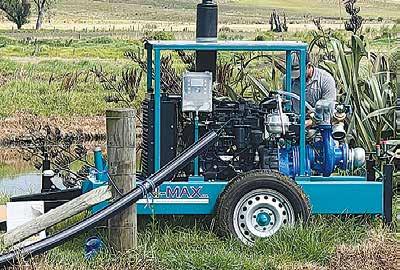

LANDOWNERS WITH farms bordering the Hoteo River, north of Auckland, are hopeful their pressure will influence the outcome of two applications by local iwi relating to ownership of the riverbed.
“It shouldn’t be happening,” Colin Smith, Auckland Council’s local ward representative for the Wellsford subdivision, told a public meeting in the town this month.
“My family has been here for 160 years, but I’ve not had this in all my life. We’ve always come together to get things done but this is dividing the community.”
The trustees of the Ngati Manuhiri Settlement Trust and Te Runanga o Ngati Whatua made an application to the Maori Land Court over two years ago in December 2022, asking it to make an order that the bed of the Hoteo River is Maori customary land. Ngati Manuhiri want an order that the river’s bed upstream of the Tarakihi Falls is held by the Crown for their people while Ngati Whatua want an order that the riverbed from the river’s mouth at the end of the area it claims in the Kaipara Harbour to its headwaters is held by the Crown for its people.
The 28-kilometre river begins where the Whangaripo and Waiwhiu streams meet, north-east of Wellsford and is the largest river in the Auckland region by both flow and catchment area, covering almost 27,000 hectares. It has been stressed that there was no intention to dispossess landowners and that the applications involved only the bed of the river, so its water and fish were not affected.
In late 2023 the Attorney General sought for both applications to be declined, saying the 48 owners of each of the riparian blocks adjoining the riverbed were set out and their titles described in an attached schedule. Those landowners
include Auckland Council, the Department of Conservation, Watercare Services and Waste Management, which hopes to site a landfill on adjacent land in the Dome Valley.
The deadline for registrations of interest in the applications is March 20 with a judicial conference set down for April 2. Ngati Manuhiri and Ngati Whatua have also publicly advertised for supporters of their claims for the Hoteo riverbed as Maori customary land to register their names, addresses and phone numbers with them by the end of this month.
Smith asked for a show of hands from the over 50 people attending the meeting as to who supported the status quo, with the majority voting that way. Two iwi members voted for iwi ownership of the riverbed under the Crown, expressing the view that the applications were more an issue between the two iwi. As different groups had always shared the river landowners could be assured they were safe.
A Facebook group of affected landowners has been set up with donations being called for, but many were still unaware of what was happening despite flyers being widely distributed, the meeting was told. So far only 14 owners have returned the necessary Maori Land Court forms to appeal the applications.
The group is seeking donations as it’s already incurred over $1500 of legal costs. Its legal advice has clarified that the applications don’t appear to relate to streams that flow into the Hoteo River or out of it. But landowners with both riparian titles and easements registered on their land titles should seek status as interested parties. Once total registrations were in a landowners’ group could be formed to seek a meeting with Ngati Manuhiri and Ngati Whatua to find out exactly what they were seeking. Smith, who farms at Wharehine further to the north, said he would
be raising the matter with Auckland Council, with the hope that something could be done before the case went back to court.
“Why do we need to go to court?” he asked.
“No one should be
claiming anything. All we need is support from the community. We want to make sure the Hoteo is in our hands forever. We’ve just got to do our bit, follow process and get an outcome.”
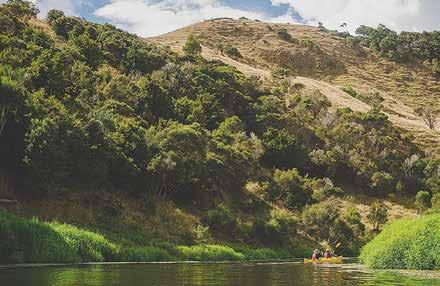

Five years on, Levin farmer George Thompson reflects on his life-changing accident and says it’s great to see more support for farmers to make the industry safer.
GEORGE THOMPSON will never forget Valentine’s Day, for all the wrong reasons.
On 14 February 2020, the Levin farmer wasn’t meant to be working but one of his team called in sick, so his alarm went off at 4.30am and he was straight into his work on the rolling terrain.
He was managing a 450-cow herd and had been working on the same farm for 23 years.
Thompson was tired from a big week. He was driving his quad bike when something distracted him in his peripheral vision. He later learned that it was a cow upside down in the drain.
One moment of distraction was all it took as the then 63-year-old drove his quad bike headfirst into the drain.
“It all happened so quickly,” says Thompson. “I remember standing up
and thinking ‘man that hurt’, and next thing my legs just gave way on me.
“I slid down into the drain, and I had all these tingling feelings in my fingers… I knew I was in trouble.”
Thompson managed to get his phone out of his top pocket, and he swiped the last person, his colleague Darryl Ryan, he had rung the night before. Ryan knew exactly where he was, and he called an
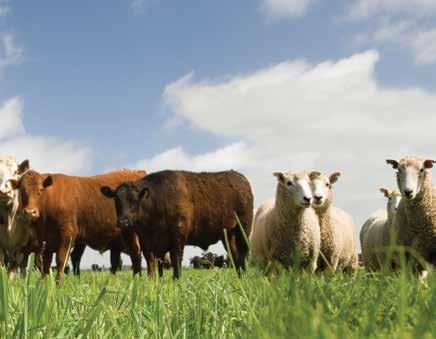
-
- Fast uptake by plants
- Easy to apply
- No animal handling required
Selenium
Selenium
Levin farmer George Thompson says farming is the best job in the world, but “you have to look after yourself”.
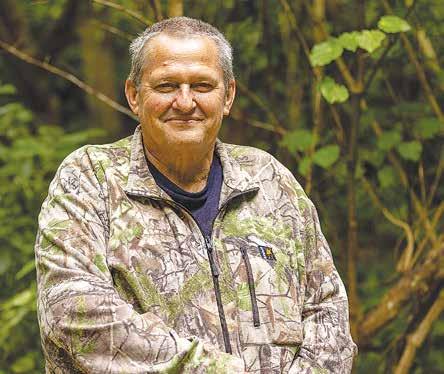
IN 2024, ACC accepted 23,440 farming related injury claims at a cost of $120 million to help people recover. This was the highest number of claims since 2021 and the highest cost in the past five years.
ACC and Safer Farms have announced a new partnership to reduce harm, injuries and fatalities in the agricultural sector.
The partnership will see over $11 million invested by ACC over the next five years, supporting the agriculture sector in the implementation of Safer Farms’ innovative grassroots ‘Farm Without Harm’ strategy.
“We’re committed to driving positive, enduring change for New Zealand’s agricultural sector and we believe Safer Farms is key to supporting that commitment,” says Andy Milne, ACC deputy chief executive strategy, engagement and prevention.
Milne says they are focused on supporting the agriculture sector in ways
ambulance and Thompson’s wife, Jane.
Thompson, a farmer of 38 years, was lying in the drain and holding his neck in place as he waited for help.
Around an hour later, three ambulances, the fire brigade and a helicopter arrived at the scene to get him to Wellington Hospital for emergency surgery.
When Thompson saw Jane he said, with his dry sense of humour: “Happy Valentine’s Day honey.”
“She came rush-
that are practical, impactful and sustainable.
George Thompson adds: “This is great to see. The farm is a dangerous environment, and our young farmers come in and after a few months, think they know it all.
“They need that guidance and experience around them to support their decision making. The more we can do to promote safety on the farm in a practical way, the better.
“My story shows that one mistake can have a lifelong consequence.”
ACC and Safer Farms
The key focus areas in the action plan are:
• Psychosocial risks resulting in diminished wellbeing
• Harm experienced while working in and around vehicles and mobile plant
• Muscular stress and injury caused by livestock handling
• Harm caused by exposure to agricultural chemicals and airborne risks
ing down and called me a bloody idiot,” he says with a laugh.
He had a few days in Wellington Hospital. Their worst fears were confirmed when he was told that had fractured his neck and damaged his spinal cord.
He was given a 20% chance of walking again. His long road to recovery began with six months in the Burwood Spinal Unit in Christchurch.
“It was hard to get my head around it all,” he
says. “One minute I was on my farm and loving my life in my dream job and the next I was in the spinal unit and not sure what the future held.”
But Thompson never got down. He said the other patients in the Burwood Spinal Unit gave him perspective.
“I would say to my psychiatrist, ‘listen, I’ve got nothing to complain about, because next door is [another patient] Mr. Pickles, who was paralysed from the neck down
and has it much tougher than me’.”
Thompson set about achieving his goal of walking out of the Burwood Spinal Unit.
He says the laughter and banter with other patients got him through the hardest time in his life.
“When they gave me a 20 percent chance of walking, I just took that with both arms,” he says. Thompson was determined to prove them wrong. He met with his physio at Burwood, Quinn and they formed a great partnership.
“I remember she gave me a sheet of paper, and all it had was ‘Can’t’ written on it. I said, what’s this? She said it is the only word I don’t accept.”
It was long and slow progress, but he achieved his goal which was an emotional moment.
He says ACC has been a huge support in every step of his rehabilitation.
“I can’t complain about anything,” he says. “Everyone I have dealt with has been marvellous and I am grateful for everything they have done for me.”
Thompson got walking again and has made huge progress. In 2024 he and Andrew Leslie, who he met during his time in the Burwood Spinal Unit, walked the Abel Tasman National Park together and this year he and his wife are planning a trip to Europe.
Thompson, who still works part-time as a farmer, caretaking for farmers so they can have a break. He has great advice for anyone in the industry.
“It’s the best job in the world, but you have to look after yourself,” he says. “Make sure you have got the right people to support you on the farm and watch out for signs of stress and fatigue. I made a simple mistake because I was tired and wasn’t thinking clearly.”
Alliance Group has secured greater access for chilled beef exports into China following approval of its Levin and Mataura plants to supply that market. With its first load of beef from Levin clearing Chinese customs in early January and a shipment from Mataura recently arriving in China, journalist Leo Argent talked to Alliance general manager safety and processing Wayne Shaw.
HOW LONG have you been working on getting this approval to expanding the Chinese market?
Wayne Shaw: It’s a process we’ve been working through the last 12 months. We already have our Pukeuri plant approved, but obviously China is a very important market to Alliance so we had an interest in getting the Levin and Mataura plants approved for chilled beef production. How does gaining approval to supply any foreign
Chinese market work?
Generally speaking, the NZ authorities (MPI in this case) have agreements with their counterparts in other countries that set out protocols and process for achieving listings.
Alliance is responsible for making sure we meet Overseas Market Access Requirements. MPI will then audit the plant that has the application in and, subject to that plant meeting all requirements, they will then put a rec-
ommendation through to their Chinese counter parts to have the plant listed.
Who approached who for this deal; Chinese customers wanting NZ beef or NZ producers wanting market access?

A bit of both. We have established customers in China for both our highquality beef and lamb. In the case of beef, New Zealand is quite unique, largely grass fed, differentiated from the rest of the world’s largely grain
confidence, slow growth, and now US tariffs. While this new deal is good right now, is ‘NZ meat’ wise to be investing so heavily in China, versus other markets?
China has had its well-publicised chal-
lenges and is going through an economic reset, but the reality is China remains a critically important market for the New Zealand beef industry.

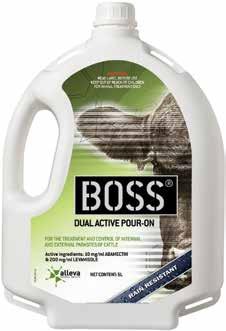
cattle as we go through the peak of the cull cow period which is coming up in a couple of months. What does this deal mean for Alliance’s future options?
When we’re processing any species we’re looking to optimise returns for our suppliers and farmers at all times. The more options we have, the greater probability of maximum returns.
It is important in all industries to have a range beef mainly comes from the steer, heifer cattle.
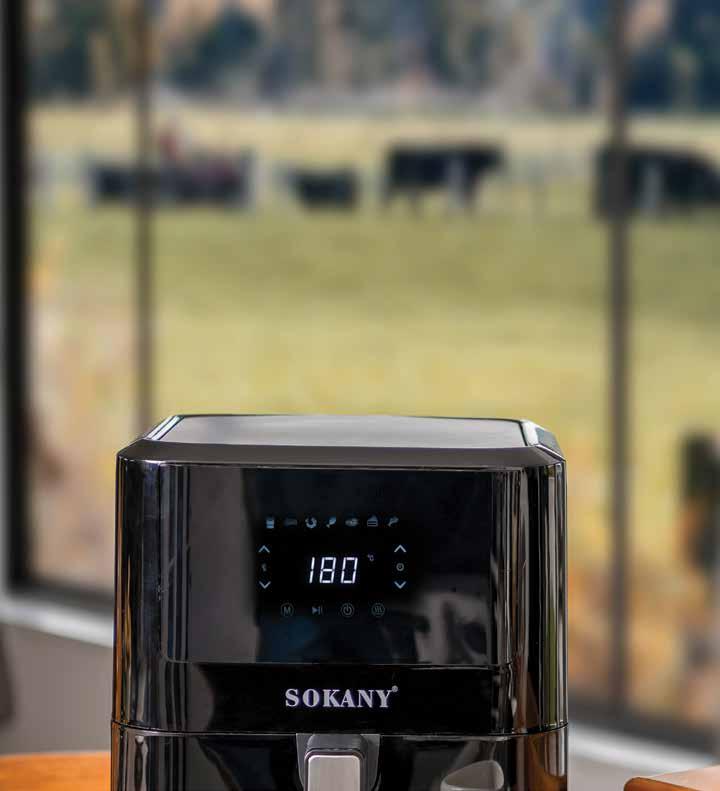
They’ll continue producing some chilled production year-round.
Obviously, a higher proportion of their processing numbers will be manufacturing type
If one market might be down in one area for one particular cut, then we’ve got other options. As well as already having access to chilled into the likes of the US, EU and domestic, having access to chilled beef in China gives us another very significant market to move product to, chilled products generally being a premium compared to frozen.

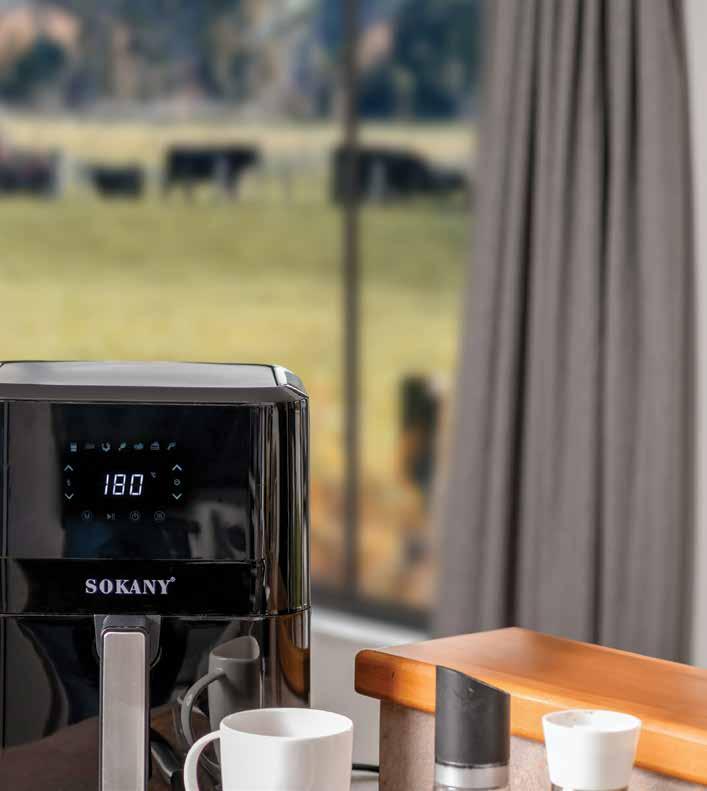
SUBMISSIONS on the Government’s contentious Gene Technology Bill have closed.
However, the furore surrounding the proposal to end New Zealand’s near 30-year ban on gene technology outside the lab isn’t going away. There’s opposition from within the Government’s traditional support base – farmers and growers.
Gene technology isn’t all bad of course. It’s seen as being able to deliver enormous benefits, including access to better cancer treatments, and increased productivity for farmers through such things as disease-resistant and droughtresistant grasses, and tools to help meet emissions targets. The bill is seen by many as a major milestone in modernising our laws to unlock the potential of science.
There’s support for the intent of the bill from dairy and sheep and farmers. However, some farmers are worried about the trade and market access risk.
DairyNZ points out that there is a well-established system and practices used for production of high-grade seed crops, which provide a working example of co-existence in practice.
Beef+Lamb NZ says that there are potential opportunities to improve farmers’ productivity and environmental impacts. However, it says there are also several potential risks that still need to be addressed in the proposed legislation. These include potential market or trade implications, traceability and co-existence, and how risks are classified.
State-owned AgResearch supports the bill and says it provides the opportunity to align NZ’s activities and regulations with those of our major trading partners such as the US, Australia, China, and potentially the EU.
But there’s opposition from organic farmers who claim the bill is a threat to organic and conventional farmers, makes GMO-free certification impossible and places financial risks on farmers, not biotech companies. They also claim that deregulation of GE products could remove mandatory labelling, leaving consumers unaware of what’s in their food, and economic and trade risks for New Zealand’s $1 billion organic industry.
The Government remains committed. Gene technology is a powerful tool that has the potential to deliver enormous benefits for New Zealand, it says. They may have the numbers to pass the bill, but should not ignore the views of those who don’t want it enacted.
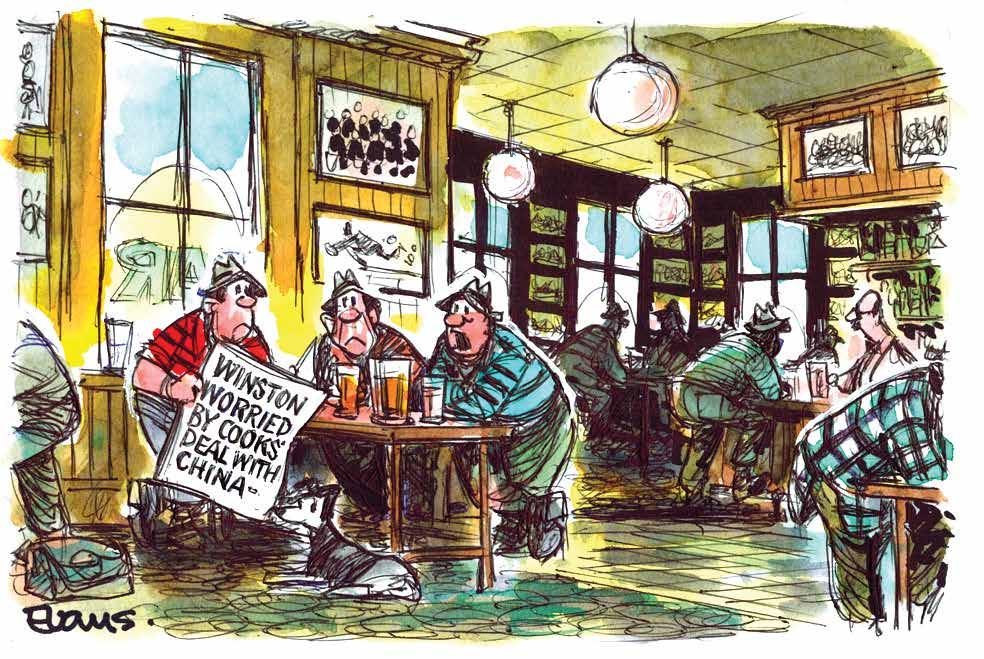
AS JIM Bolger once said, “Bugger the polls!” But let’s face it, we can’t help ourselves from looking every time a new one comes out. This far out from an election, it doesn’t really matter much which mob has, in theory, got its nose in front, and yet, the Hound struggles to believe that, according to the Curia poll, the left-of-centre bloc is polling stronger than the other mob so soon after sending the country to the bottom of the OECD economic rankings. The old ‘right way, wrong way’ indicator has swung into the red too, suggesting that for PM Luxon and friends the honeymoon is over and the people want to see material improvements, particularly in terms of the economy and cost of living – easily the priority issues, according to this poll.

YOU MUST feel a bit sorry for poor old Christopher Luxon. His appearance at National Lamb Day was a positive that got sidetracked somewhat by the fact that as he arrived at the event he was handed and asked to wear a meaty T shirt, which he immediately put on over his shirt & tie. Some supposed fashion ‘expert’ screamed that this was a terrible fashion mistake, and that became the headline. Good on him for turning up to promote one of the country’s biggest export industries. Your old mate hears that the sight of the PM with a chop, however, brought a few snide comments about the symbolism of this, such as “will he eat the chop or will he get the chop” – a cynical reference to recent poll numbers.
PRODUCTION: David Ferguson Ph 027 272 5372 davef@ruralnews.co.nz
Becky Williams Ph 021 100 4381 beckyw@ruralnews.co.nz
HEAD OFFICE POSTAL ADDRESS: PO Box 331100, Takapuna, Auckland 0740
Phone 09-307 0399
PUBLISHER: Brian Hight Ph 09 307 0399
GENERAL MANAGER:
Adam Fricker Ph 021-842 226
EDITOR: Sudesh Kissun Ph 021-963 177 sudeshk@ruralnews.co.nz
REPORTERS: Peter Burke Ph 021 224 2184 peterb@ruralnews.co.nz
Nigel Malthus Ph 021-164 4258
MACHINERY EDITOR: Mark Daniel Ph 021 906 723 markd@ruralnews.co.nz
FOR THE last few weeks, we’ve witnessed a parade of complaints about New Zealand’s school lunch program: ‘It’s arriving late.’ ‘The portions are wrong.’ ‘I wanted caviar.’ And some beneficiaries of the program complain the meals are comparable to ‘dog food’. Some of the noise is the usual politicking and media bias, but is it just this old mutt that thinks there’s more than a hint of entitlement here from some parents? The idea that the state would provide free meals to schoolchildren would have seemed extraordinary back in the day when parents took responsibility for having kids. You can bet that the generous free milk in schools programme wins Fonterra and its farmers little if any gratitude, despite the fact the money for it comes straight out of farmers’ pockets
AUCKLAND SALES CONTACT: Stephen Pollard Ph 021 963 166 stephenp@ruralnews.co.nz
WAIKATO & WELLINGTON SALES
CONTACT: Lisa Wise Ph 027 369 9218 lisaw@ruralnews.co.nz
Want to share your opinion or gossip with the Hound? Send your emails to: hound@ruralnews.co.nz
HENRY DIMBLEBY, author of the UK’s Food Strategy, recently told the BBC: “Meat production is about 85% of our current farming use so we can afford to pull that back a bit in order to restore nature… in order to get clean energy. That is not a major sacrifice.” So, to meet Paris targets, the UK aims to reduce farmland by 9%. A country only 62% self-sufficient in food (2023 Defra figures) becomes more dependent on food imports. And, no surprises, they expect livestock farmers to bear the brunt of it –the anti-meat brigade no doubt having a massive say in this. NZ chasing Paris Accord targets might be politically ‘aspirational’, but it’s not worth sacrificing our major exporters for. This is in effect what the MP for North Shore, Simon Watts is set to impose on us.
SOUTH ISLAND SALES CONTACT: Kaye Sutherland Ph 021 221 1994 kayes@ruralnews.co.nz
DIGITAL STRATEGIST: Jessica Marshall Ph 021 0232 6446
LIKE MANY others
in our rural communities, I grew up in a farmhouse with our telephone proudly sporting something like a crank handle on it.
And we had a party line with four other households on that same line. To connect with any of those neighbours on our line, we had to crank that handle. It was ‘cutting-edge’ technology, I’d like to remind you!
I remember one family had two long rings, another, three shorts. We were one short and one long. Oh, the good fortune to have honest people as your neighbours, who didn’t quietly pick up their phone for a sneak listen-in on others’ calls!
Ringing someone in another region was quite a task, not to mention connecting with friends in another country.
Trying to explain this to the grandkids today is like trying to describe life from another planet. Explaining stuff in a foreign language may be easier.
My goodness, how communication has changed. It’s now a whole different world. We carry our phones in our pockets today and can connect to anyone almost anywhere in mere seconds.
With the help of social media platforms, we can connect with people on a whim and surround ourselves quick-smart with more ‘friends’ than pre-
vious generations could ever accrue in a lifetime! Quite amazing, really. Yet for all that, loneliness has not receded for many. If anything, it’s gotten worse. I have read and been told many times that lots of people struggle with the face-toface stuff today. Talking through a keypad is more than just okay, it’s the preferred means of communication. How shallow!
A few years ago, I read about a new (at the time) business venture – ‘Rent a Friend’ as somebody labelled it. They offered friendship, or family, for hire. And no, it was not sexual in nature.
It was a well-meaning attempt to push back against loneliness. If you needed a friend for the weekend, someone to attend a movie with, or even family for a special occasion, just hire them in. Even grandparents for the weekend were available.
Or, if you wanted a crowd for your wedding, to make it look like you were popular, with many friends, yes, they could sort that for you. Even for your funeral too, if you really wanted to impress the ‘whoevers’ that might happen to glance your way.
A little more recently I read something that to me is sadder still. Older women in Japan were deliberately committing crimes. Yep, they were that desperate. They wanted to get


imprisoned because they would get well looked after, find some companionship and new friends. Some even offered to pay good money, if they could extend their stay beyond their release date.
It’s that desperate aching loneliness thing again!

It seems to me, the solution for many is to medicate it. However, I can’t see how that will fix it. Mask it? Yes. Cover it up with a band-aid? Yes, again. But is that all there is? Is that the best we humans can come up with?
In my earlier work-
ing years, I worked alone a lot. I still spend a lot of time in my own company. But I cannot recall being lonely. There is a huge difference between being alone and loneliness.
I now link it back to what’s happening in our inner world. For me, that’s the biggie! And for
that, we really do need an expert. I have found Him to be a Friend like no other!
Email me if encouragement will help. Keep well and God bless.
• To contact
Colin: farmerschaplain@ ruralnews.co.nz
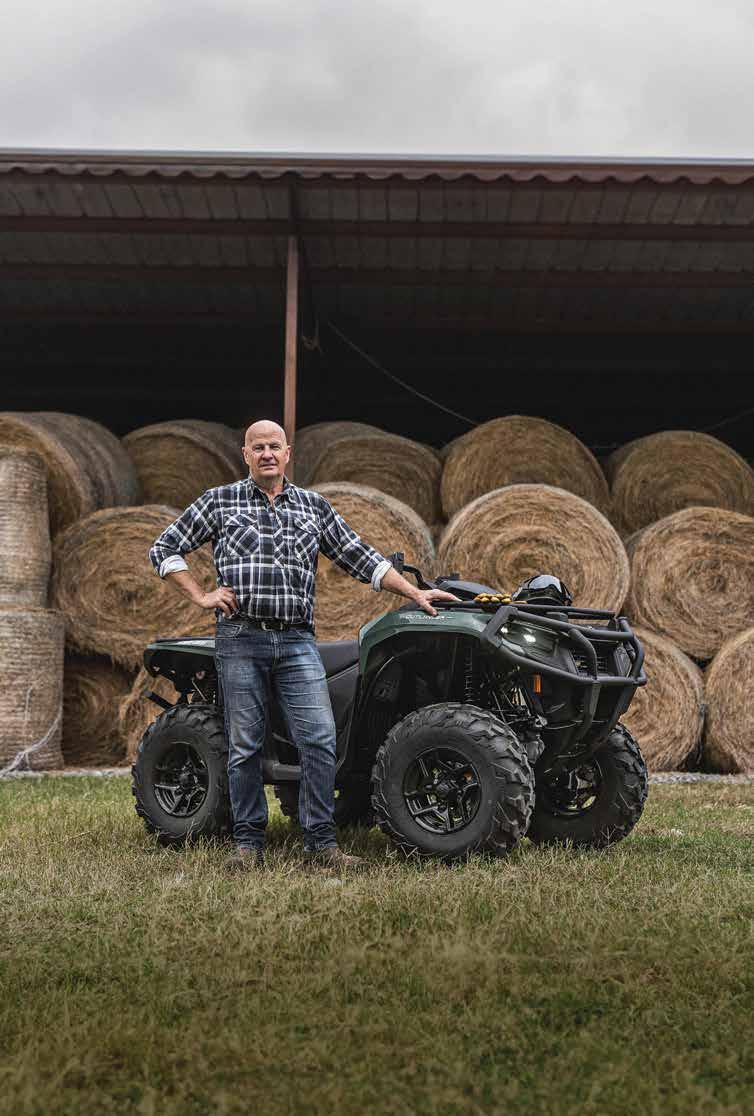
EARLIER THIS month,
we received the exciting news that New Zealand’s apple and pear sector had surpassed $1 billion in revenue for the very first time.
It is a significant achievement and a true testament to the hard
work and resilience of our growers after a number of challenging seasons.
However, scratch at the surface of the data (NZAPI’s 2024 Economic Impact report), and you’ll reveal even more about our valuable and everchanging sector.
While planted area
has more or less returned to a pre-Cyclone status quo and operating costs – along with inflation –continue to weigh heavy on growers, revenue has increased significantly, by 27%.
We attribute this movement to an increase in high-value, premium apples and pears, as well
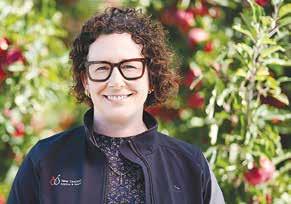
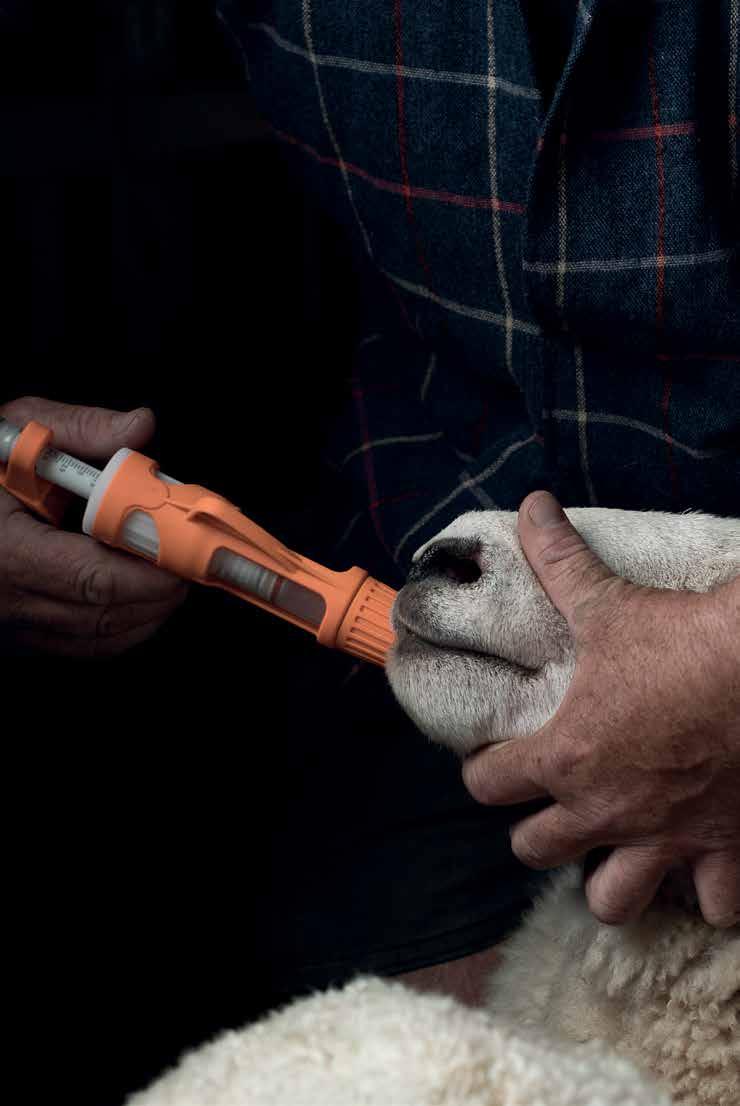
as improvements to productivity and a diversification of international markets.
It hasn’t come from flooding the global marketplace with New Zealand pipfruit – certainly
Aotearoa is a small producer compared to most on the international stage. Rather it has eventuated by pulling sustainable levers that ensure a healthy operating environment conducive to grower prosperity.
It also comes from doing what we do best, producing the world’s best apples.
New Zealand apples and pears are renowned as a premium product. Our growers take pride in producing fruit that is healthy, clean and sustainable, and this year’s crop is exactly that.
Harvest is underway and the fruit coming off the trees is consistently excellent; clean, highvalue, premium-quality fruit.
Textbook winter and spring conditions ensured New Zealand’s apple and pear harvest would have exceptional colour, eating and flavour, while storability is expected to be as good as ever.
What’s more, the 2025 New Zealand Apple and Pear’s annual crop estimate is predicting this season’s harvest to deliver a 10% increase on exports, from 19.1 million TCE in 2024 (actual) to a potential 21.0 million TCE in 2025.
It is a return to form for the industry after several challenge years and will have meaningful flow-on effects to related industries and the communities around us.
Our growers take immense pride in the economic impact that their industry contributes to New Zealand and the economic impact statistics highlight the value of the industry’s work.
As more older orchards are replanted with IP varieties with modern planting systems, the downstream benefits will be significant to the sector, national exports and the towns and cities we live in.
The 2024 Economic Impact data recorded a total economic impact of
$2.5 billion to the New Zealand economy, up 27% from $1.9 billion in 2023. The industry now employs more than more than 13,500 people, up from 12,820 in 2023.
At a regional level, the growth trend continues.
In Hawke’s Bay, home to 65% of the nation’s apple and pears crop, the industry contributed $1.3 billion in total economic impact; increased its GDP contribution by 37% to $583 million; and now employs more than 7,000 people.
In Tasman, home to 23% of the national crop, the industry contributed $383 million in total economic impact; increased its GDP contribution by 8% to $179 million; and now employs more than 3,300 people.
In Tairāwhiti, home to 5% of the national crop, the industry contributed $75 million in total economic impact; increased its GDP contribution by 38%, from $25 million in 2023 to $35 million; and employs almost 100 people.
In Central Otago, home to 4% of the national crop, the industry contributed $65 million in total economic impact and increased its GDP contribution by 8% to $30 million.
Yet, as we take a moment to reflect on this achievement, it’s important to note revenue does not equate to orchard gate returns.
Our growers and the wider sector remain committed to growth and excellence, ensuring that New Zealand pipfruit is consistency recognised as the best in the world. However, returns that fund this growth, development and excellence are the critical requirement to ensure the industry remains buoyant.
So, we wait to see what 2025 will bring, and work to secure a legislative and working environment that delivers prosperity, not just to the New Zealand economy but back to our growers themselves.
• Karen Morrish is chief executive of New Zealand Apples and Pears Inc.
NZ Hothouse Ltd has always been ahead of the game when it comes to sustainability, but new innovations are coming thick and fast.
Decades after they first began harvesting rainwater to nourish their tomatoes and cucumbers, the company is now trialling compostable twine and truss clips and hope to roll it out sitewide as soon as possible.
The move will divert an astonishing 12,000km of plastic twine from landfill every year, as it can simply be composted along with other green waste.
NZ Hothouse sales and marketing team member, Claudia Wharfe, says all crops are grown vertically, winding around twine suspended overhead. The growing facility spans 19ha across two sites.
“In a year, we use enough twine to stretch from New Zealand to Los Angeles, so that’s a lot of plastic waste,” says Claudia.
“We have previously trialled compostable growing materials, but none were suitable. Now with new developments and redesigns, we believe making the switch to compostable is achievable. We’ve been trialling various options over the last 12 months and hope to roll it out across
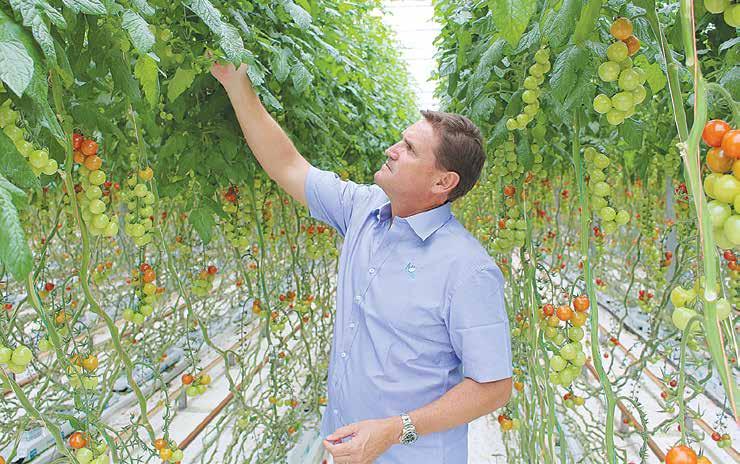
the whole business next year.”
The company prides itself on its eco-friendly approach and recyclable packaging, alongside its family culture. The business was founded 40 years ago by Claudia’s father, Brett Wharfe, and continues to employ multiple family members plus a long-standing team –“so they feel like family too”.
OVER FOUR decades, the company has grown to become a major supplier of tomatoes and cucumbers to domestic consumers. Their cherry and strawberry tomatoes are currently packed and sold under Woolworth’s and Foodstuff’s own brands (Woolworths and Pams).
Claudia says snacking varieties have skyrocketed in popularity in recent years as consumers gravitate towards convenience and pre-packaged items.
“When we first started growing cherry tomatoes 20 years ago it was a niche variety and we produced 500,000 hand-
packed punnets each year. Now we’re packing 8-10 million punnets using state of the art machinery. We’ve seen massive growth in the last 3-5 years.”
NZ Hothouse is a long-time member of United Fresh and a keen supporter of industry collaboration and promotion.
“We’re proud to be part of this industry and offer something to Kiwis that has a positive outcome and keeps our country healthy.
“Our slogan is ‘from our house to yours’, so that really encapsulates what we’re trying to do.”
Today, cherry tomatoes account for half of NZ Hothouse’s total production with about 8-10 million punnets harvested each season from their Bombay site. Other tomato varieties such as cocktail truss, Roma (low acid) and loose tomatoes, plus 7-8 million Telegraph cucumbers, are grown and packed at the company’s second site in Karaka.

• High Flow
• Compact/Robust
• New Pilot Flow Filter
• Side/Bottom Mount
• Detach to Clean

• For Water Storage Tanks
• Adjustable levels from 50mm-2.5m
• Minimises pump operation
•Available in 20/25/32/50mm
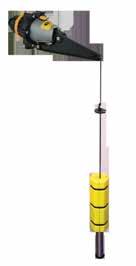
Claudia says people often question why cucumbers are individually wrapped in plastic.
“Firstly, the wrapper that we use is 100% recyclable so it can go in with the soft plastics. And secondly, the reason why it’s wrapped is because of the really high water content in cucumbers. If they’re not wrapped, you’ll have a 2-3 day shelf life. So, by the time it’s picked, put into crates and sent to store, you’ve already lost a day. Then they might sit on the shelf for a day so the consumer loses out in the end.
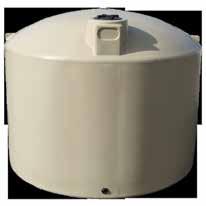
“We did a trial with Woolworths many years ago because they wanted to see what it would be like in store without wrapping. And the food wastage was astronomical. So ultimately, it’s about allowing the consumer enough time for optimal eating.”
NZ Hothouse has invested heavily in automated packhouse machinery in recent years, and continues to keep a close eye on technological developments. The business currently employs 300 people during the peak summer harvest.
“There’s been a lot of gains in automation and robotics over the last five years which helps us get to market quicker. And because we’re more efficient, we can offer better quality and value to customers. I think automation has been a great win for the whole industry. But everything that we grow is handpicked by staff and all of our crop work is done by hand.” Pests and diseases remain the number one challenge. NZ Hothouse employs a dedicated ‘bug scout’ to identify crop problems and uses integrated pest management to tackle common issues such as introducing Encarsia wasps to keep on top of whitefly.
@rural_news facebook.com/ruralnews

• Stainless steel bracket and Shaft
• Fits plastic and concrete tanks
• Rugged and long lasting

PROGENY TESTING at Pāmu’s Kepler farm in Southland as part of Beef + Lamb New Zealand’s Informing New Zealand Beef programme is showing that the benefits of hybrid vigour could have a massive impact on the future of beef breeding.
Travis Leslie, farm manager at Kepler farm, said an initial progeny testing programme was set up to test the effects of hybrid vigour and to enable the development of an across-breed genetic evaluation, but this has since evolved to include greenhouse gas and feed efficiency trials.
“The aim is to improve the efficiency of beef operations through the use of hybrid vigour and help farmers make more informed decisions about bull purchases,” Leslie said.
In the trials, Angus bulls are crossed with Hereford cows, and vice versa. The progeny of these crosses are also bred.
Extensive progeny testing on all progeny is done to find the benefits of hybrid animals.
“For the across-breed analysis, we create an index to compare bulls across breeds.”
Although it is still early in the trial period, the benefits of hybrid vigour are becoming clear, Leslie believes.
Hybrid vigour gives the opportunity to grow out larger cattle, or finish earlier.
Industry theory is that hybrid cows will have better longevity, he says.
It is also early in greenhouse gas and feed conversion trials, however it would stand to
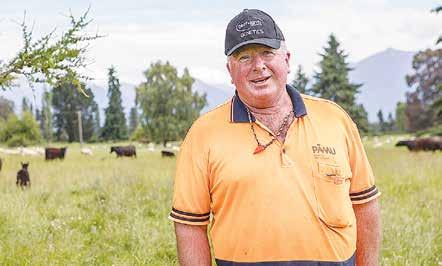
reason that a crossbred animal that is finished earlier than a purebred would convert feed better, he said.
“The animal that’s around for the shortest stay is the most methane friendly.”
Kepler Farm has sent two cohorts of heifers, totalling about 250 individuals so far, to green-

house gas trials taking 6-8 weeks over the winter.
This year, they travelled to Te Mania Angus in Canterbury for the measurements and also had feed intake measures taken.
The quietness of the heifers is a testament to the Kepler staff’s approach to animal handling and care, he said.
With the animals supplied by Pāmu, the trials were a collaboration between geneticists from Beef + Lamb New Zealand’s Informing New Zealand Beef programme, scientists from AgResearch and Te Mania Angus Stud.
The goal of the programme is to measure feed efficiency and meth-
ane in cattle in a bid to develop new traits specifically for the beef industry.
Head of genetics at B+LNZ, Dr Jason Archer, said the goal of the trial is to produce genetic tools that farmers can use to increase feed efficiency and reduce methane output, without reducing productivity.
“Ultimately we want a feed efficiency Estimated Breeding Value (EBV) and an EBV reflecting methane per kilo of feed eaten.”
Leslie said ongoing trials represent an important opportunity to drive advancements for the industry.
“There is immense value in fully recorded animals in what can be seen as a comprehensive genetics programme. There is also value in
linking animals across different programmes and having extensive data that drive strong outcomes.
“In the future, farmers will become more discerning about the bulls they select and put a lot more thinking into their beef breeding systems.
“Harnessing the benefits of hybrid vigour is a way to get something extra from what you are already doing.”
He said Kepler farm is extremely proud to be part of the Informing New Zealand Beef programme and investing in the future of beef breeding. “I can see in the future that selecting bulls for beef breeding will become much more data driven and this will give the industry a real boost.”
@rural_news
facebook.com/ruralnews





















Made in New Zealand is a feature that looks at the wealth of design and manufacturing ability we have in New Zealand, producing productive and costeffective products for the agricultural sector. This week machinery editor Mark Daniel takes a closer look at McKee Plastics, catching up with business development manager, Logan McKee.
Q: When was the company founded, by whom and why?
McKee Plastics was founded in 1975 in by William Douglas McKee, aka Doug, with the goal of providing durable, cost-effective on-farm solutions for Kiwi farmers. The business supplied reliable, locally made products that could handle the tough conditions of the agricultural sector. Over nearly 50 years, we’ve expanded our range and reputation, becoming a trusted name in agriculture, forestry, construction, civil industries and even areas such as the kayaking community.
Q: Where are you located?
Proudly based in Feilding in the Manawatu, where we’ve been a part of the community since our formation. In 2022, we expanded by acquiring a small business from Waimate, South Canterbury, which allowed us to broaden our product range. Our team is a dedicated group, many of whom have been here since the early years.
Q: What are your key products and which markets do they serve?
Our core product ranges include Calf Feeders, designed to cater for small lifestyle blocks, right the way through to large scale commercial operations, alongside water troughs that are essential for dairy and livestock enterprises. We also manufacture and market culvert pipes, for use in farm water management, civil infrastructure and drainage projects. Our South Island products include steel farm trailers, as well as 12-volt and Hondapowered spray units. These latest additions,
complement our existing seasonal product lineup, allowing us to serve farmers year-round, while taking the South Canterbury product range’s reach nationwide.
Q: Are your products unique?
Of course we have competitors in the market, but we focus on what we do that makes us different. Our products stand out because they are born & bred in NZ, being designed by our founders and manufactured locally for NZ conditions. We also build products that are durable and built to last, achieved by using high-grade materials and refined moulding techniques.
We also have an in-house focus on sustainability, actively recycling plastics to reduce waste, so we welcome any end-of-life water troughs, tanks and feeders that can be used.
Q: Looking at an everevolving market, what changes have you made over the last few years?
In recent years, we have acquired a complementary product range that increased our portfolio, ensuring we cater to rural New Zealand throughout the whole year. We constantly refine our manufacturing processes to improve efficiency, while also reducing waste. We also been strengthening our recycling program, reinforcing our commitment to sustainability by helping farmers to dispose of their end-of-life products. Moving forwards, we’ll continue to invest in innovation, sustainability, and market growth, ensuring our products remain accessible, affordable, and reliable.
Q: What has been the company’s greatest success
since its formation?
Our biggest success is being a trusted, multi-generational business that has stood the test of time.

Expanding our product range in 2022 was also a major milestone, as prior to that we have always had a “if it ain’t broke, don’t fix it” approach.
The acquisition has allowed us to offer a more diverse catalogue while keeping our manufacturing strong in New Zealand.
Q: In contrast, what has been the biggest “Oh Bugger” moment?
We have “oh bugger” moments every day, from small buggers to large buggers, so we have learned to pivot quickly in those moments.
Anyone brave enough to be in business in 2025 should account for these curve balls and roll with the punches rather than fight the waves. As an old sales rep told me years ago, “When the wind changes direction, some build walls, others build windmills”. It took me a while to realise that he meant ‘always be ready for change’, and it’s now a philosophy I try to bring to our family business.
Q: If you were approached by someone looking to start a business, what would be your three key pieces of advice?
Stay true to quality –customers remember reliability over short-term price advantages.
Adapt to change – markets shift, so businesses that evolve survive.
Build strong relationships, as success isn’t just
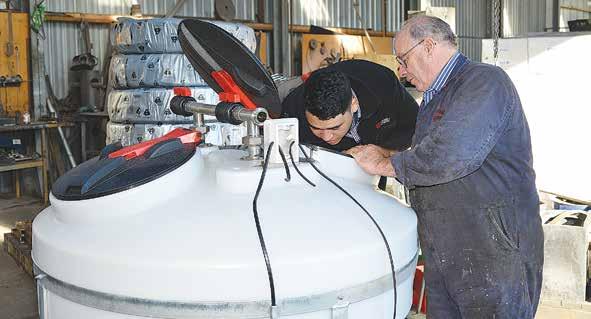
about the products, it’s about people, partnerships and trust.
Q: Where do you see the company in the next three,
five and ten years?
Over the next three years, our aim is to strengthen our national presence, while ensur-
ing our product lines continue to evolve with the market. Over five years, we plan to further develop our sustain-
ability efforts, improving recycling capabilities and working with farmers to support NZ manufacturing.

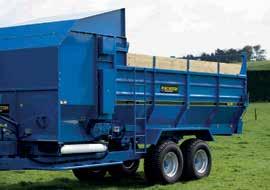
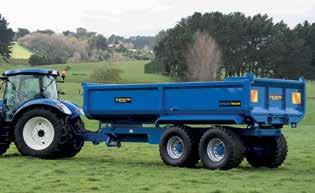
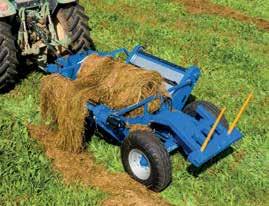
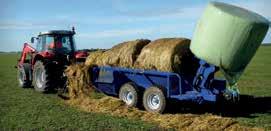

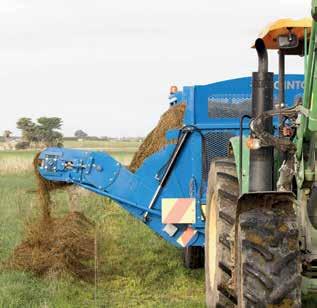
MARK
TRACTOR AND machinery manufacturer AGCO has signed a
supply agreement with the European-based SDF Group, best known for its SAME, Deutz Fahr and Lamborghini tractor brands.

Beginning mid-year 2025, the agreement will offer farmers a streamlined low-mid range horsepower tractor portfolio up to 85hp, for
AGCO’s leading Massey Ferguson brand in most global markets.
Luis Felli, senior vice president and general manager, Massey
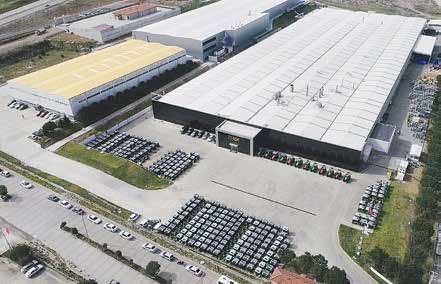
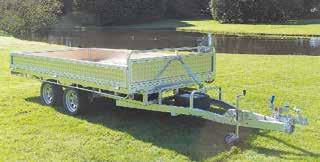
FLAT DECK TANDEM AXLE ROAD TRAILER
We have a strong reputation for building robust trailers than can take a lot of punishment. Our flat deck road trailers are constructed from quality galvanised steel, heavy duty components and road ready. Completed with sides, front and rear tailgates, braked, jockey wheel, lights and fittings, WOF and rego. Crates available and customised to the size you want.
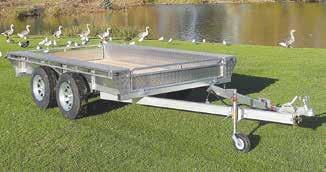
WELLSIDE TANDEM AXLE ROAD TRAILER
Our tandem road trailers are braked with tread plate alloy sides and heavy duty construction. Includes lights and fittings, jockey wheel, WOF and rego. Crates available. Custom made to your specificiations and size.
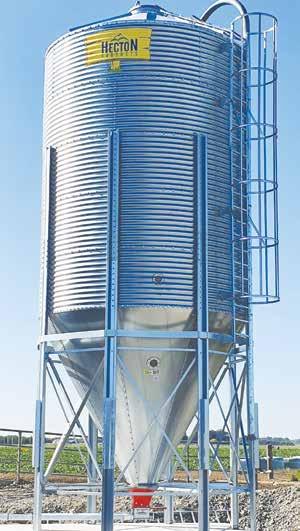
• 5-40 tonne
• Available assembled and installed or kitset
• Book in now for winter
We supply, install and service new and existing meal and molasses feed systems and also roller mill systems.

Ferguson, said “We are extremely proud to have a partner like SDF who shares our passion for serving the world’s farmers. This partnership will strengthen Massey Ferguson’s position in the low-mid horsepower tractor segment globally, allowing us to provide more farmers with straightforward, dependable and highquality equipment to drive their productivity and maximise profit.”
While details are yet to be confirmed, Rural News understands that the new product range will be offered with various powertrain options to match diverse needs of customers and markets.
AGCO expects the refreshed Massey Ferguson portfolio to help boost market share in the segment of up to 85 horsepower.
While the source of the tractors from within the SDF Group’s multiple manufacturing locations is yet to be confirmed, SDF builds tractors of this size at plants in Turkey (Bandirma) and India (Ranipet).
Production capacity at the plant in Ranipet, which SDF acquired in 2013, has been upgraded recently to boost the capacity to in excess of 20,000 units a year, largely in the 40hp to 80hp segment.
More recently, the
Bandirma plant, which assembles tractors from 45 to 130hp, has seen capacity increased to 15,000 units a year, while in 2024, SDF also opened a new 10,000m² factory at this site to produce its three, four and sixcylinder FARMotion engines. We understand that, depending on intended markets, engines will feature engine emission levels of IIIA, IIIB or V.
While the announcement suggests the new tractors will be in addition to the existing Massey ranges or whether the longer plan is to replace some of them for SDF products, some industry sources are suggesting it could be that MF is looking to plug the gap between the current Iseki-built 1700E/M (35 to 67hp) and four-pot 75hp/85hp models in the 3 series, alongside the base 82hp tractor in the three-pot 4700 range.
Of course, one must also remember that there is a somewhat strained relationship with TAFE, the Indian manufacturer, who for many years has built Massey Ferguson tractors under license and is also a major shareholder in AGCO. Currently, the two companies are arguing about the ownership rights of the Massey Ferguson brand.
